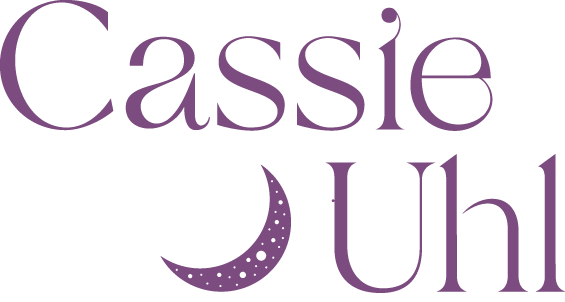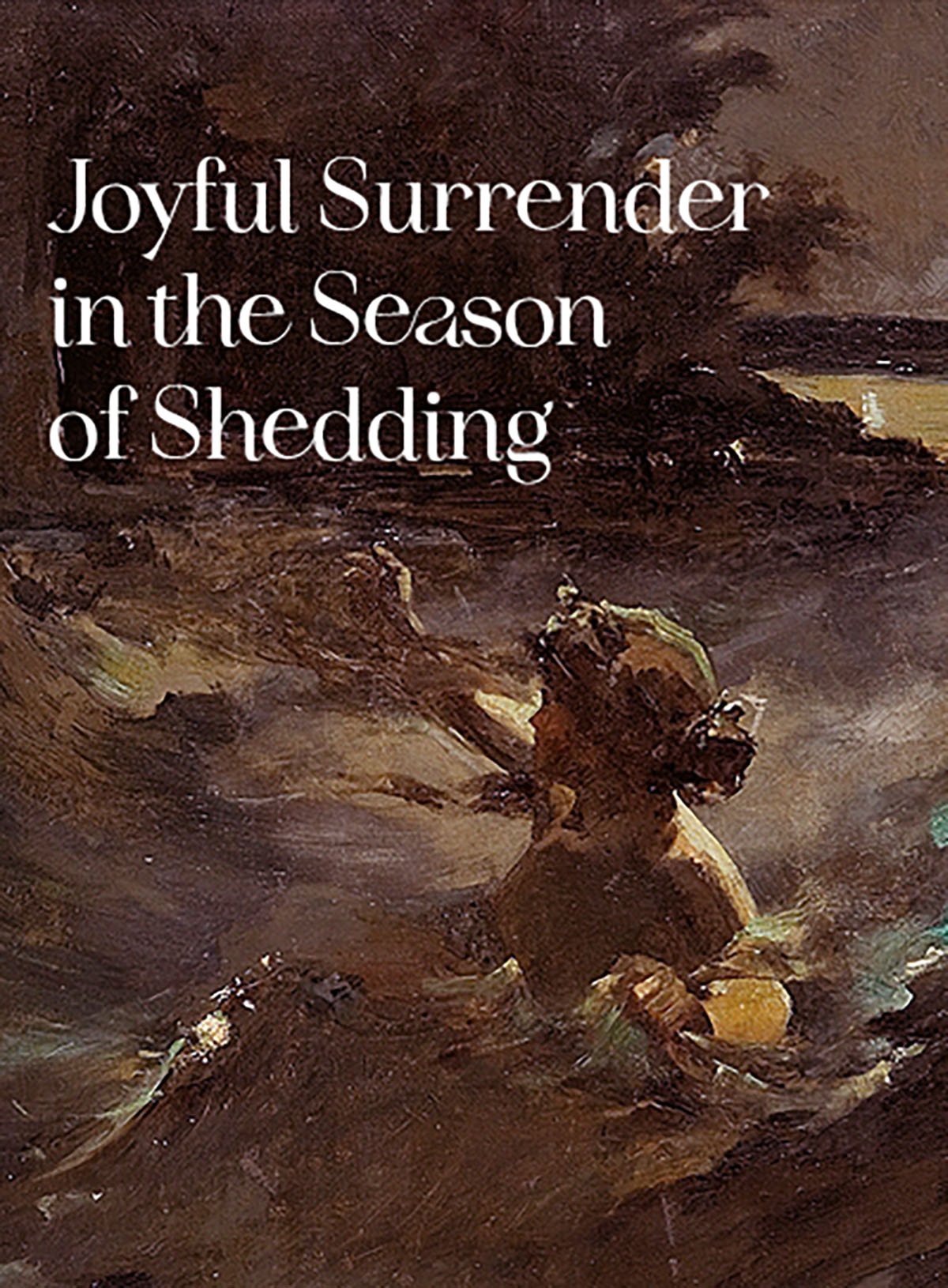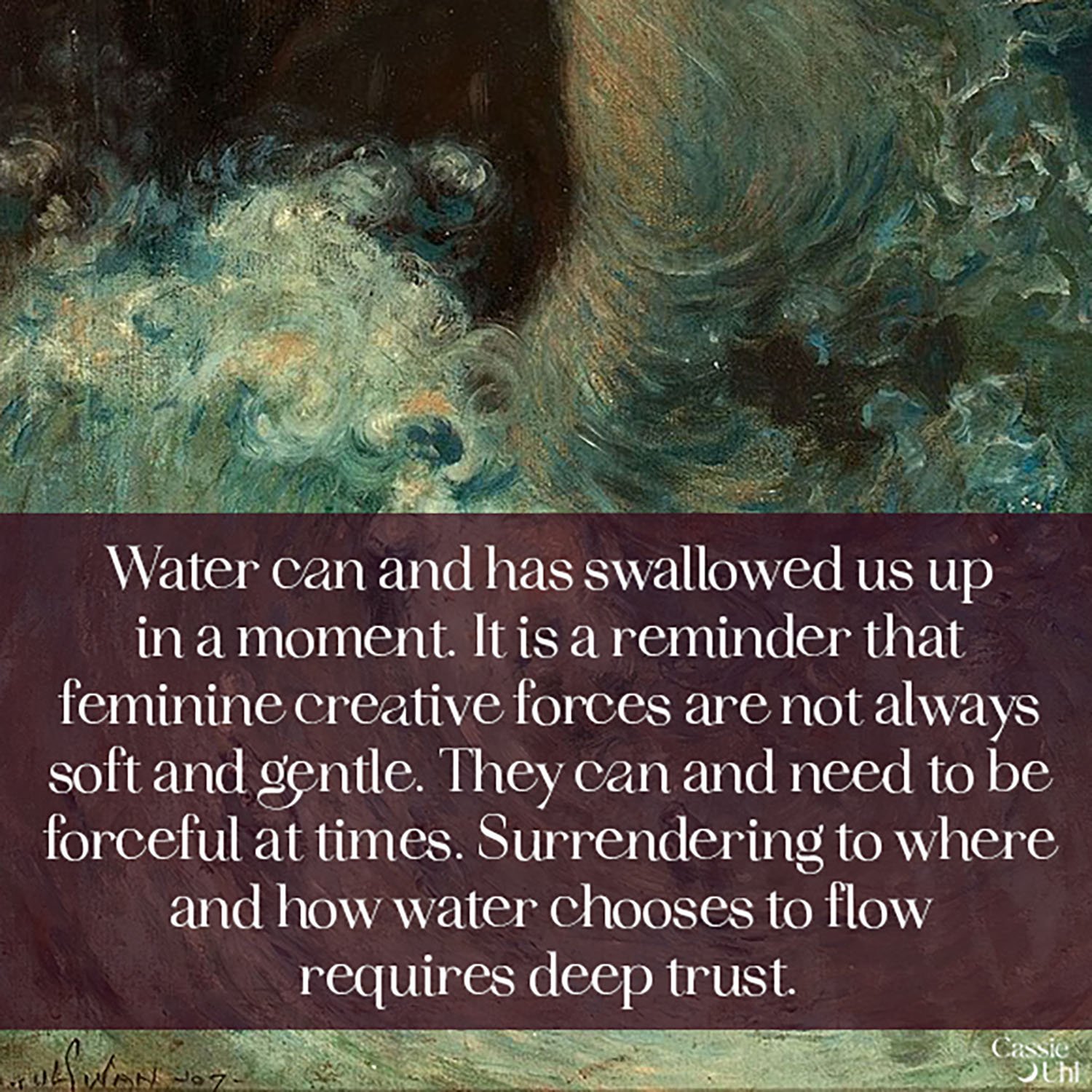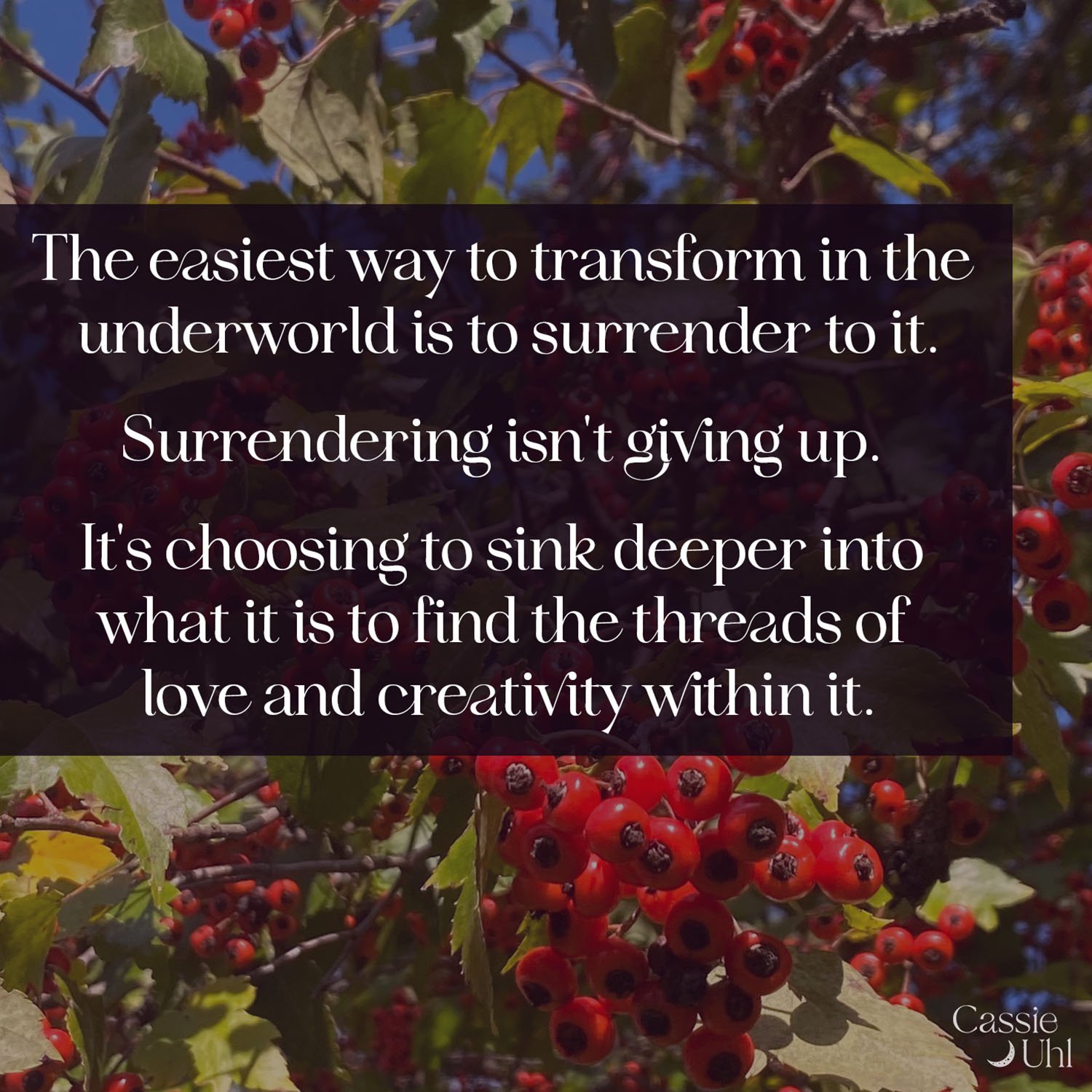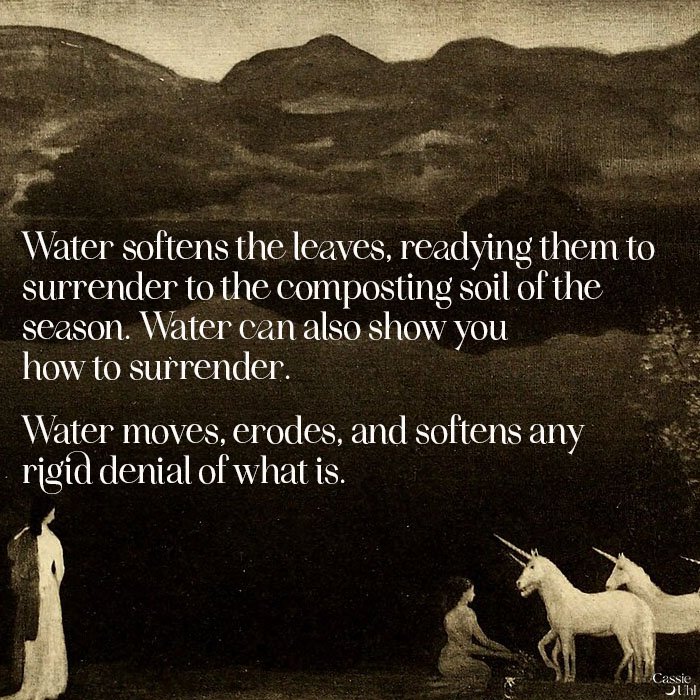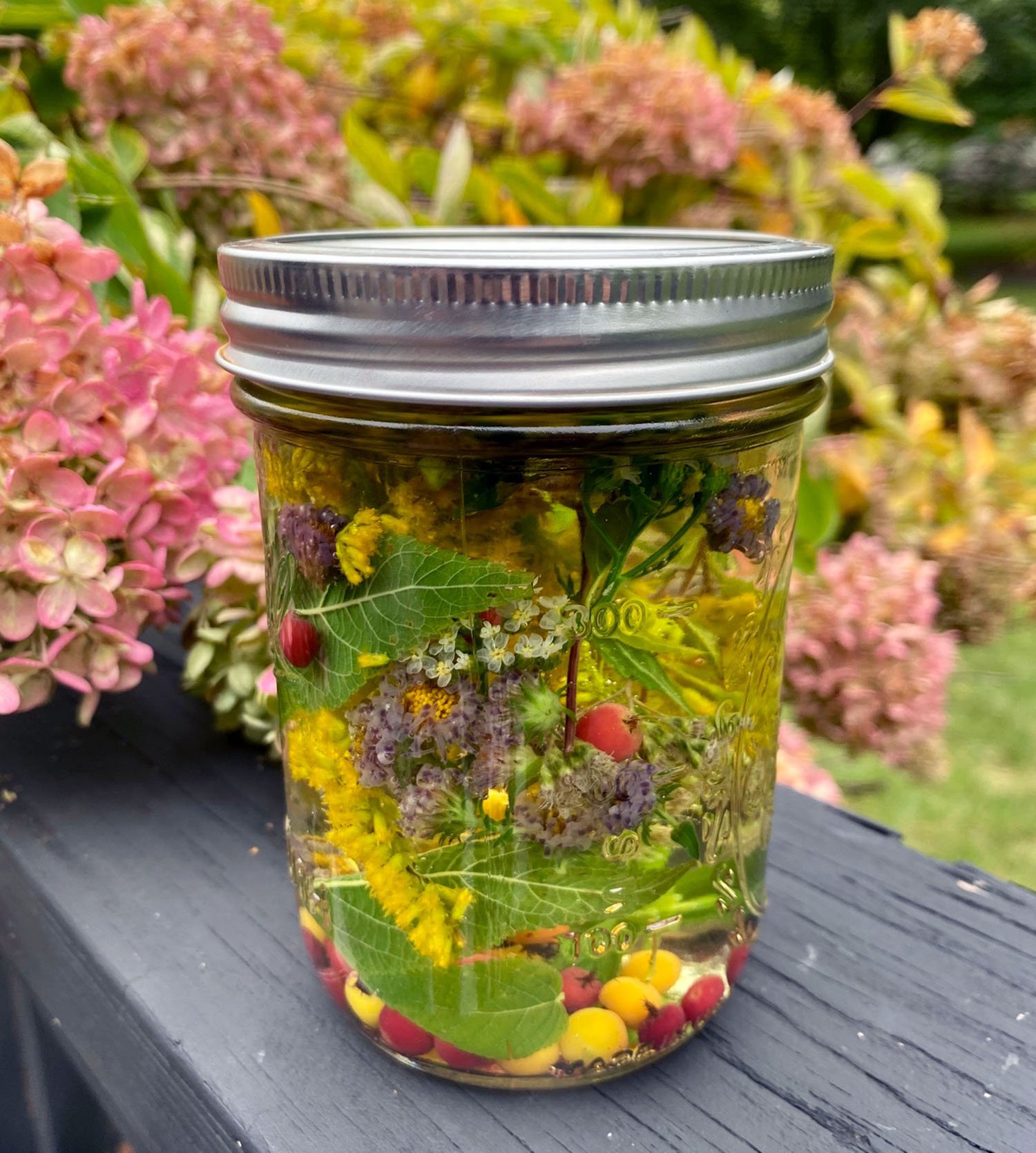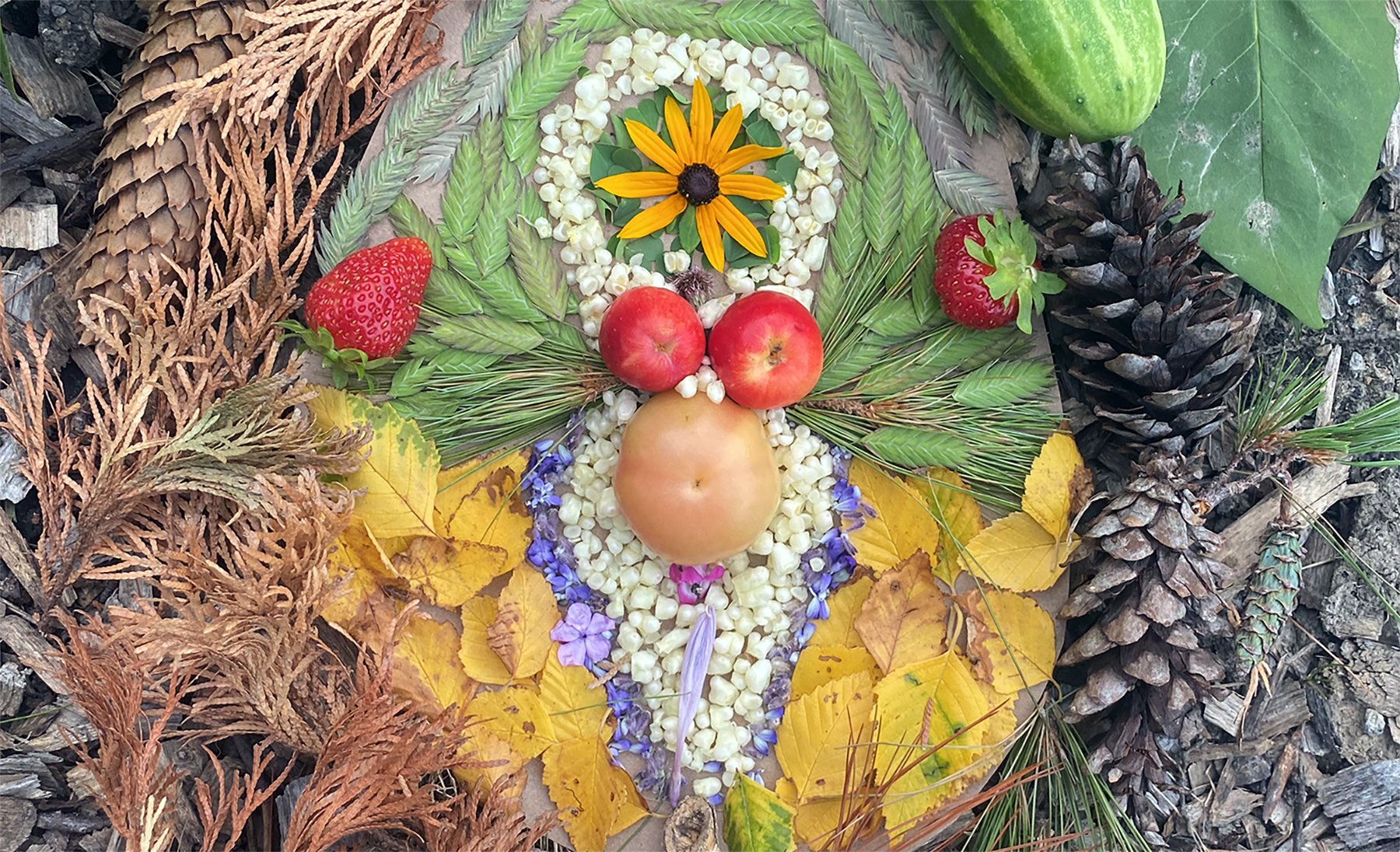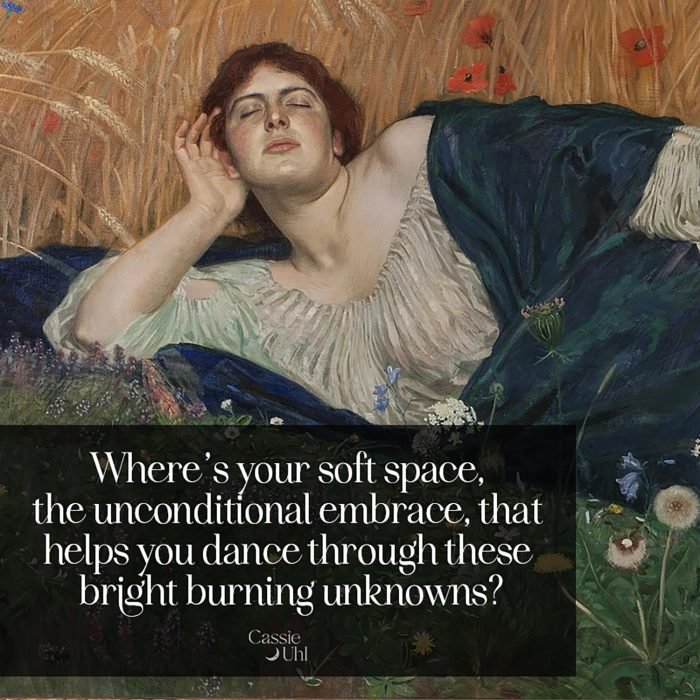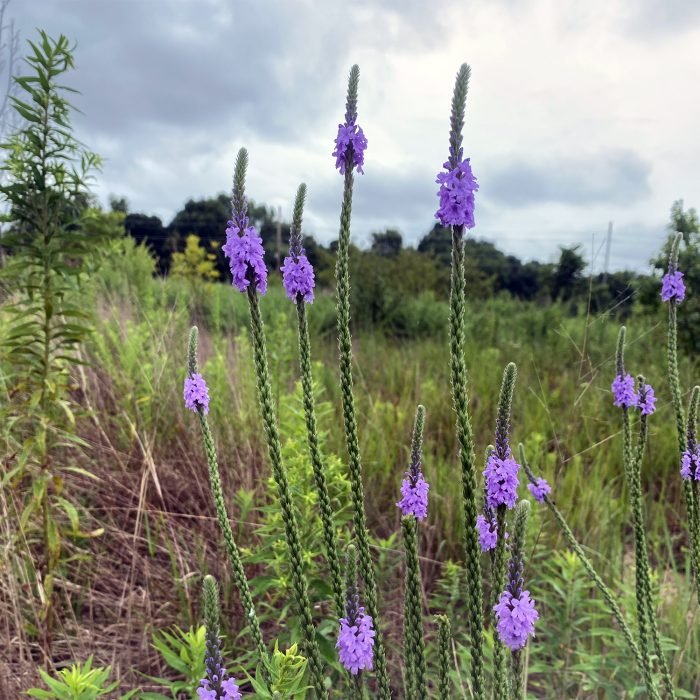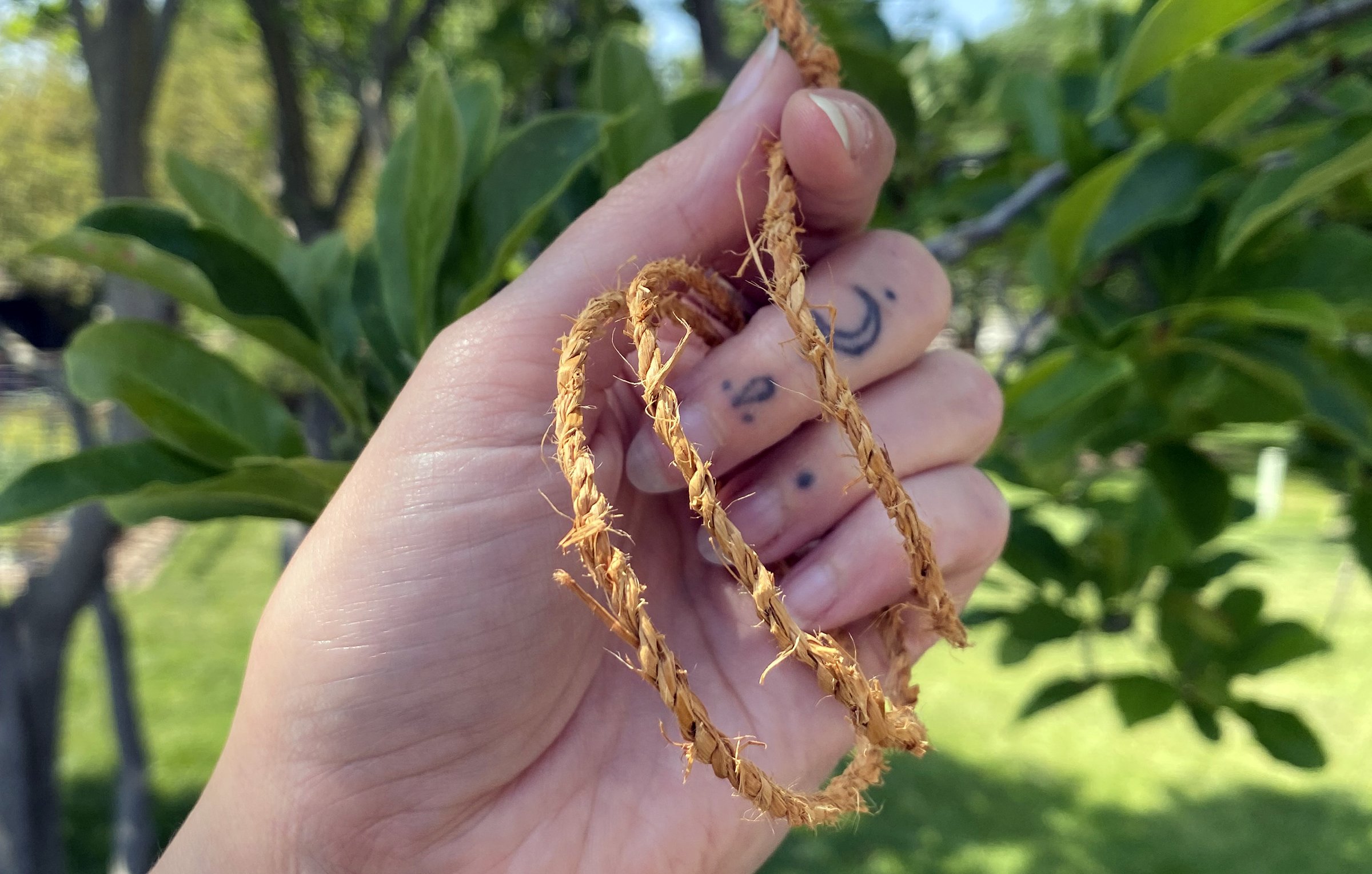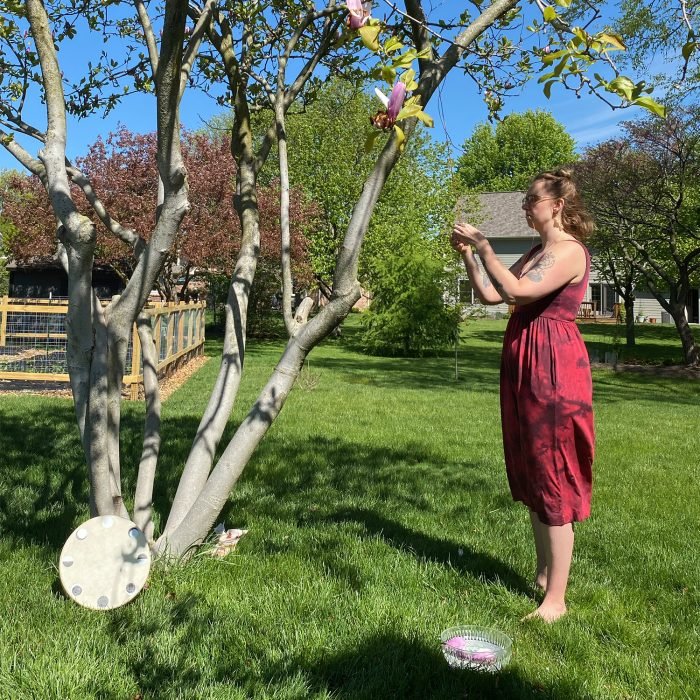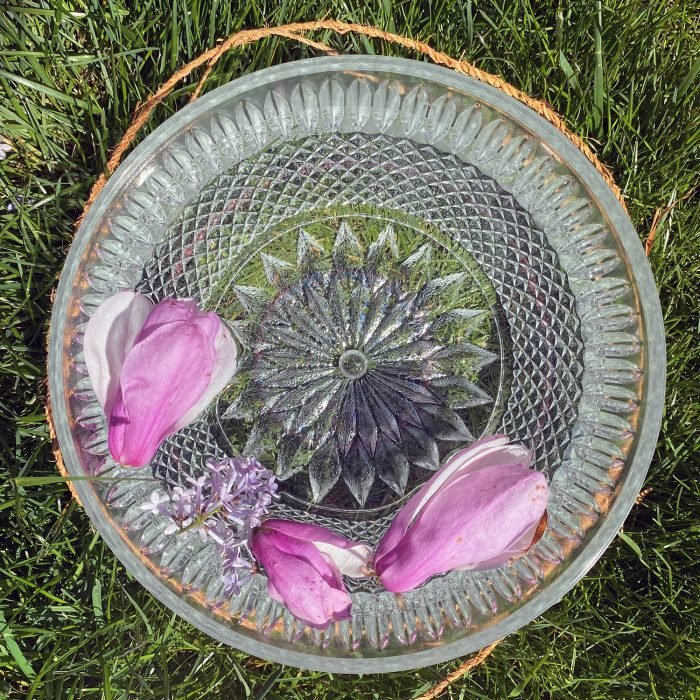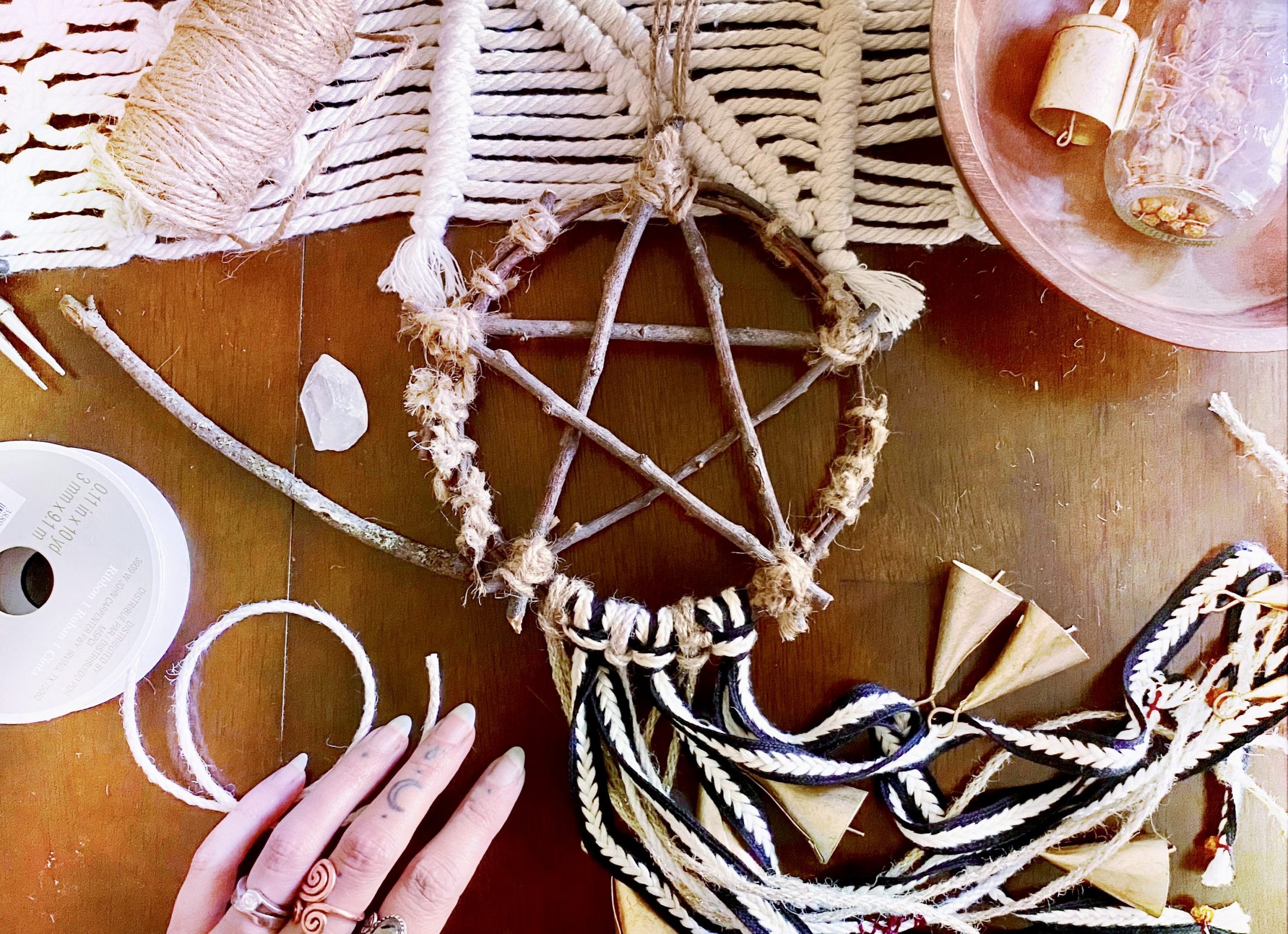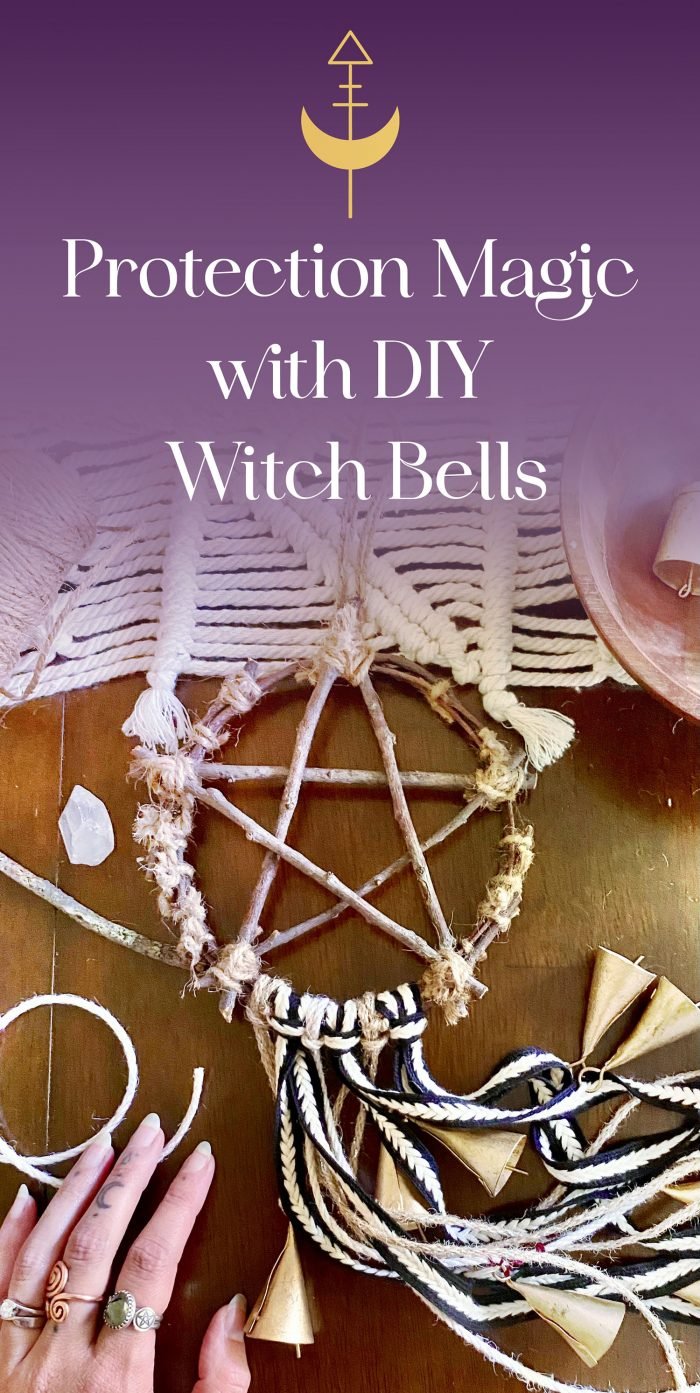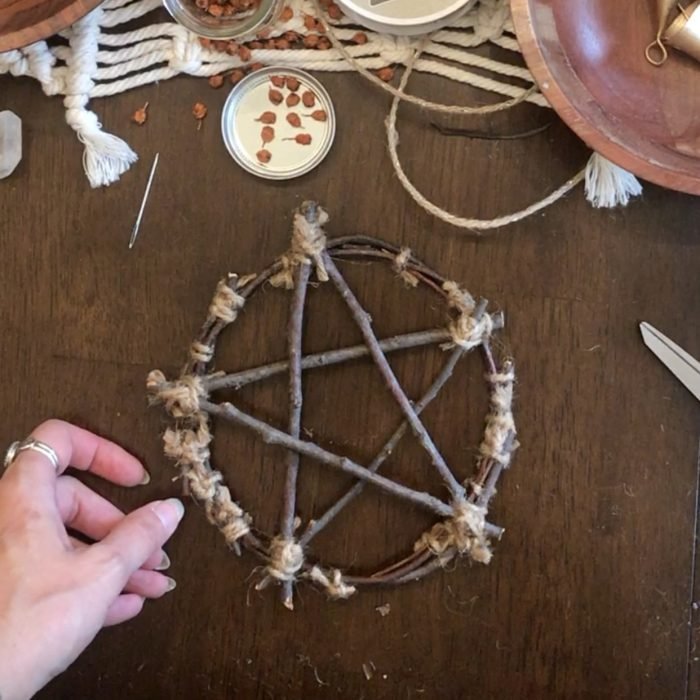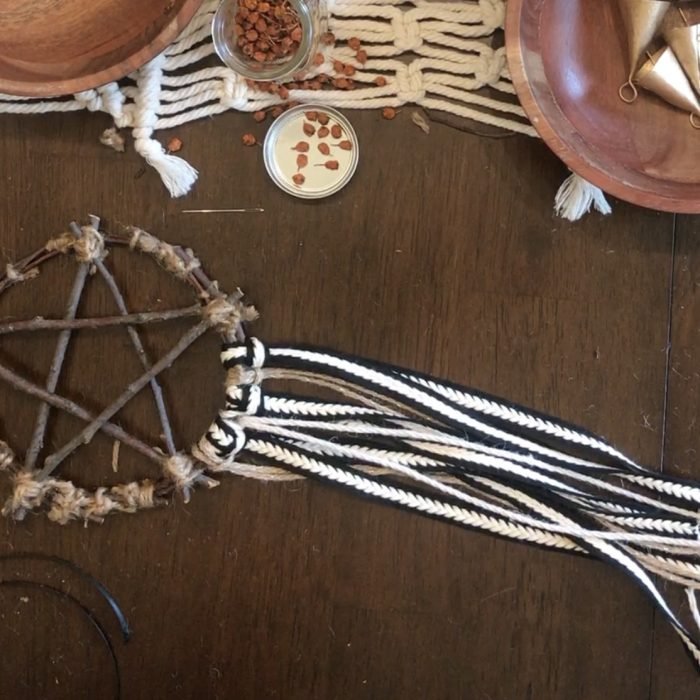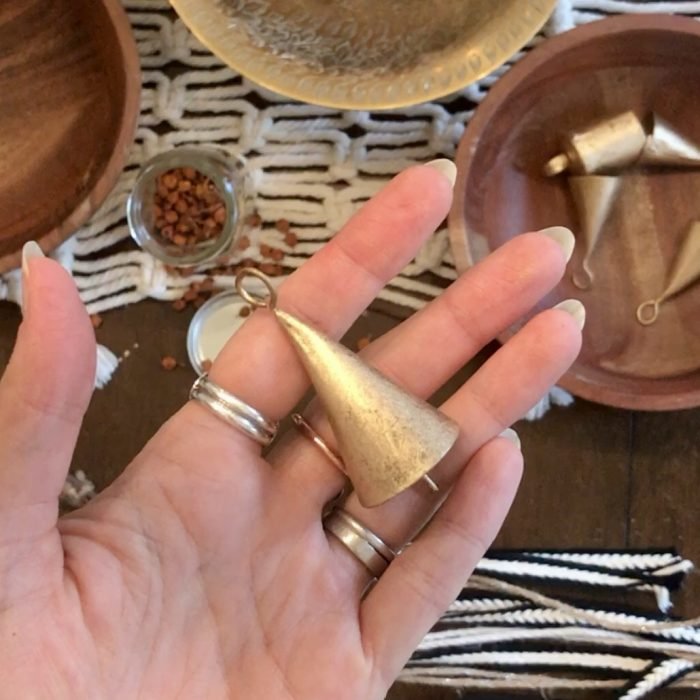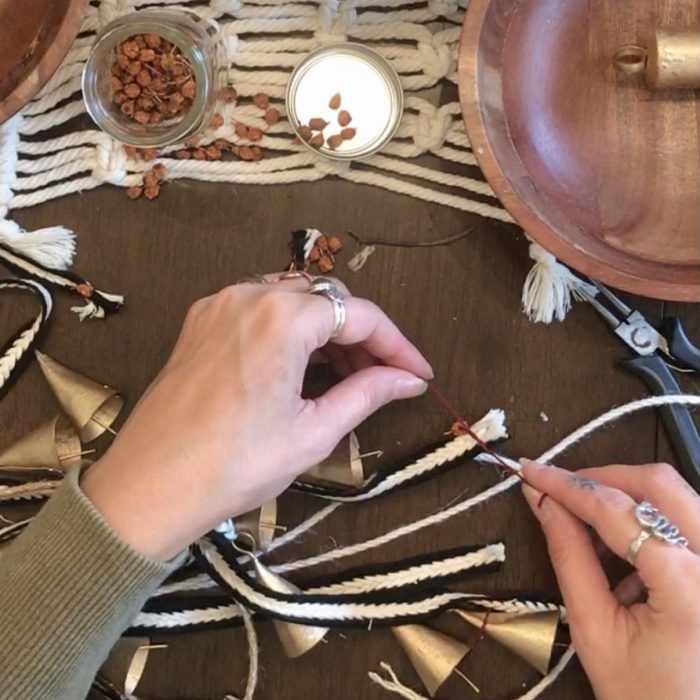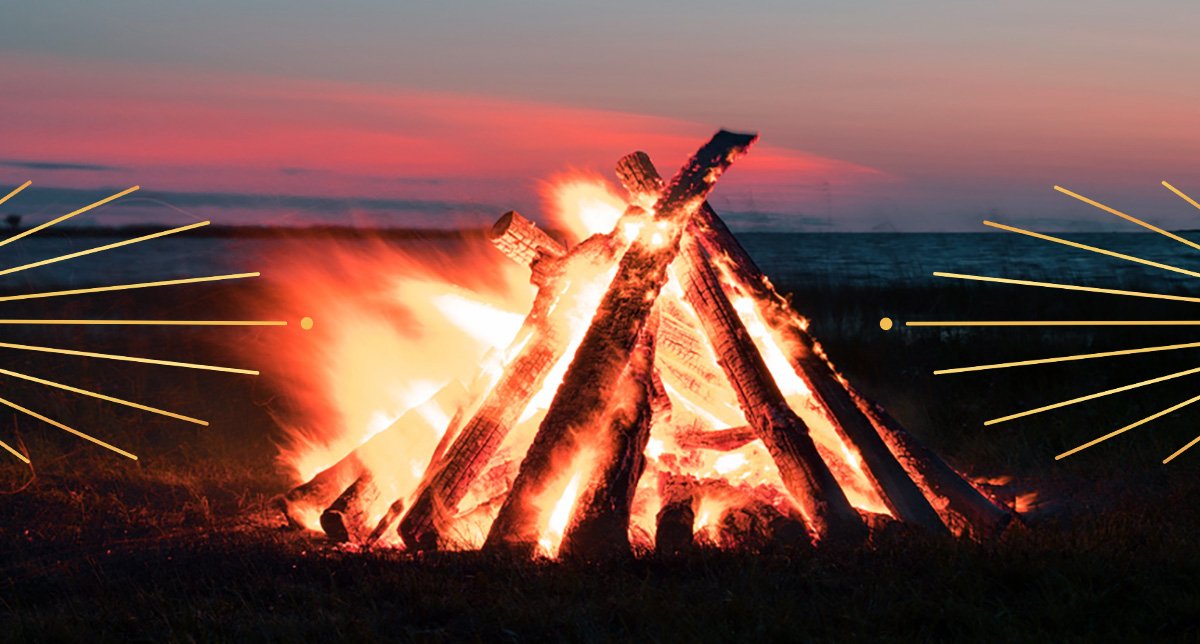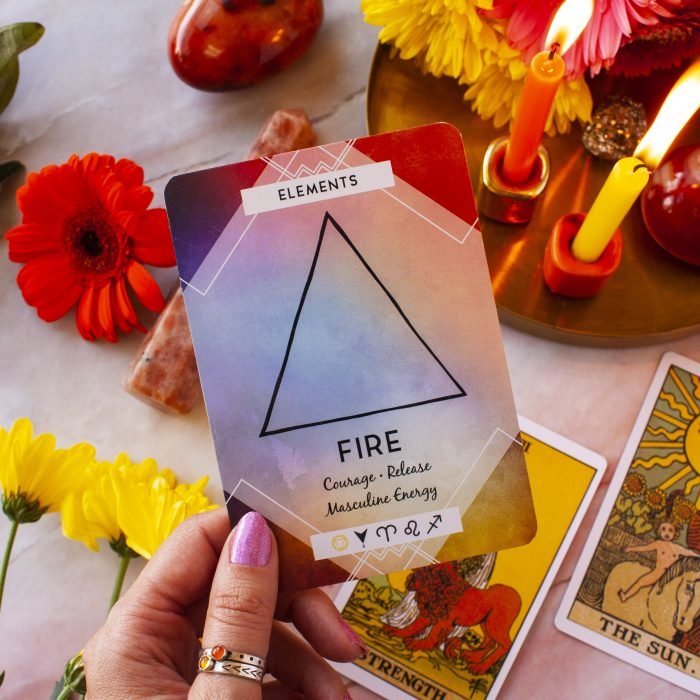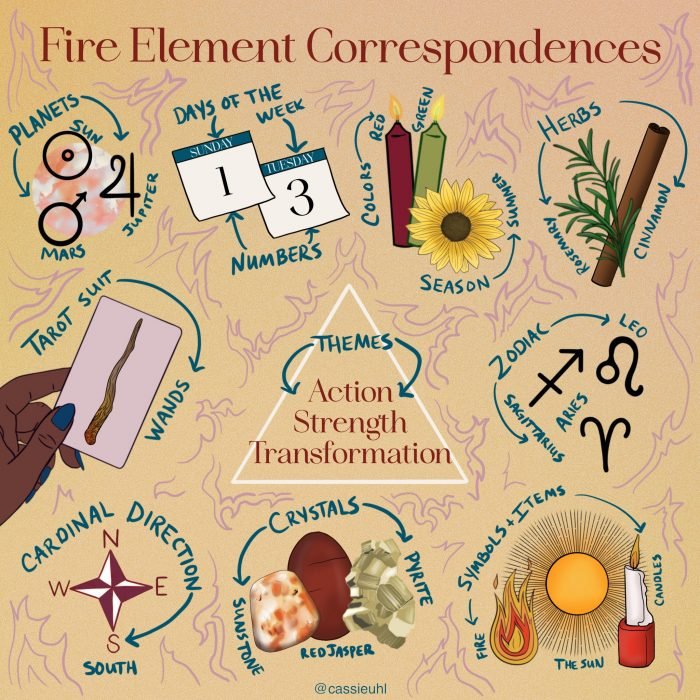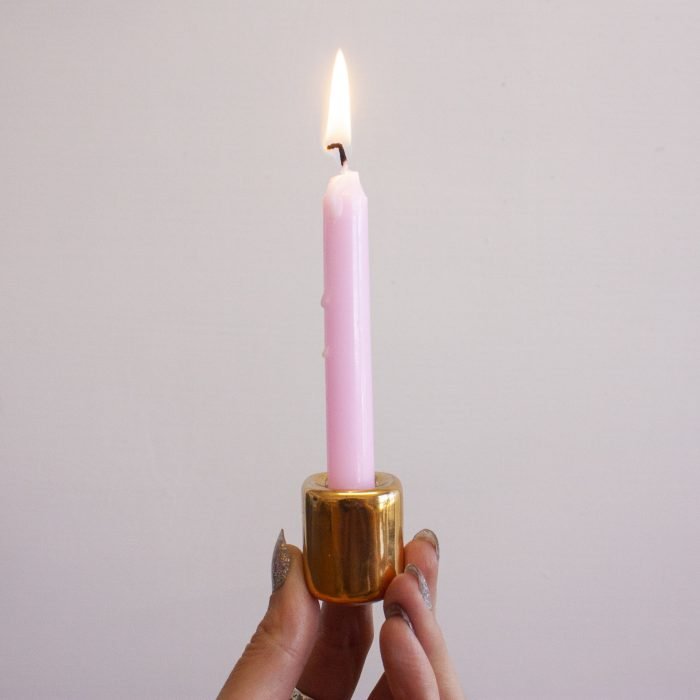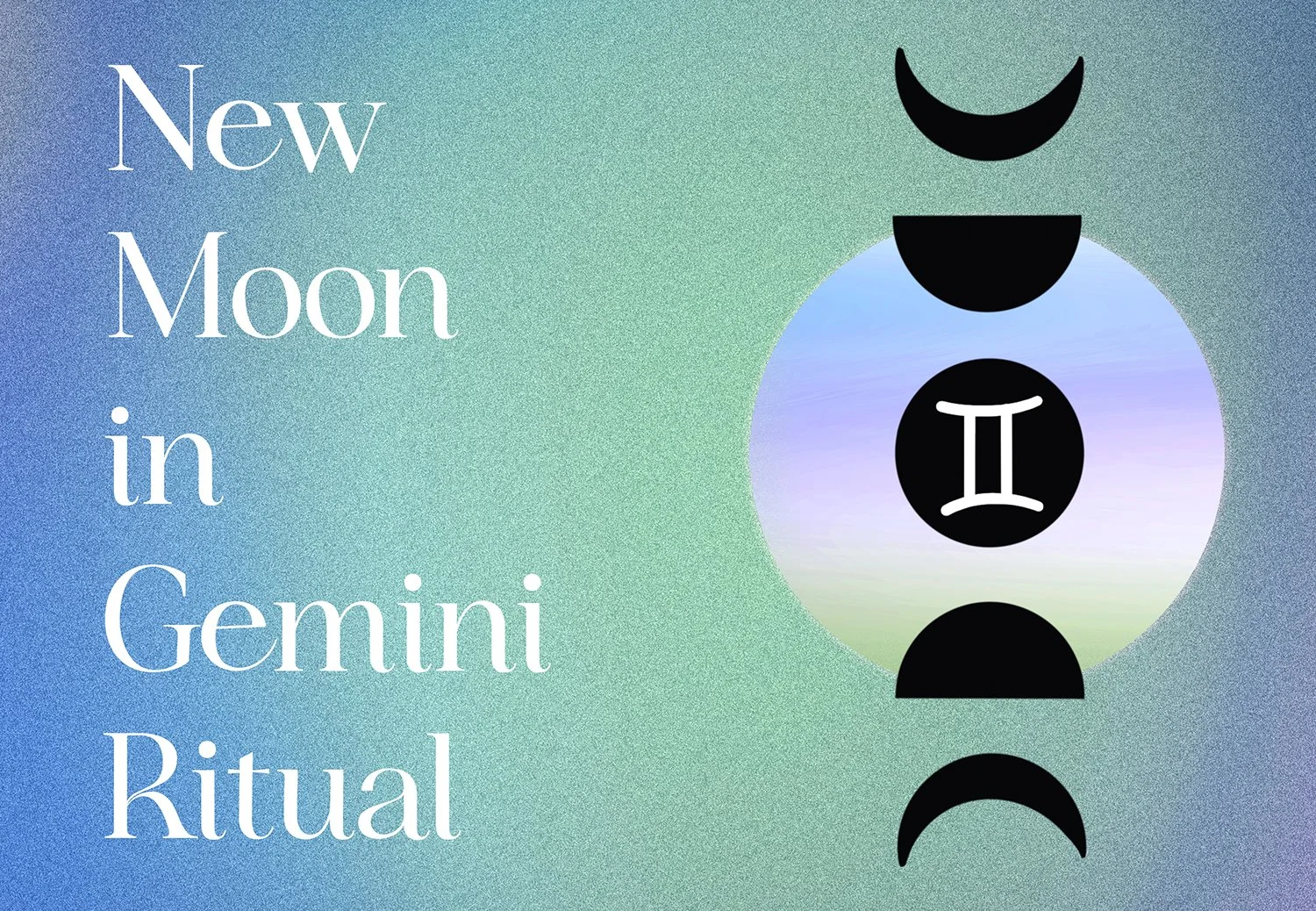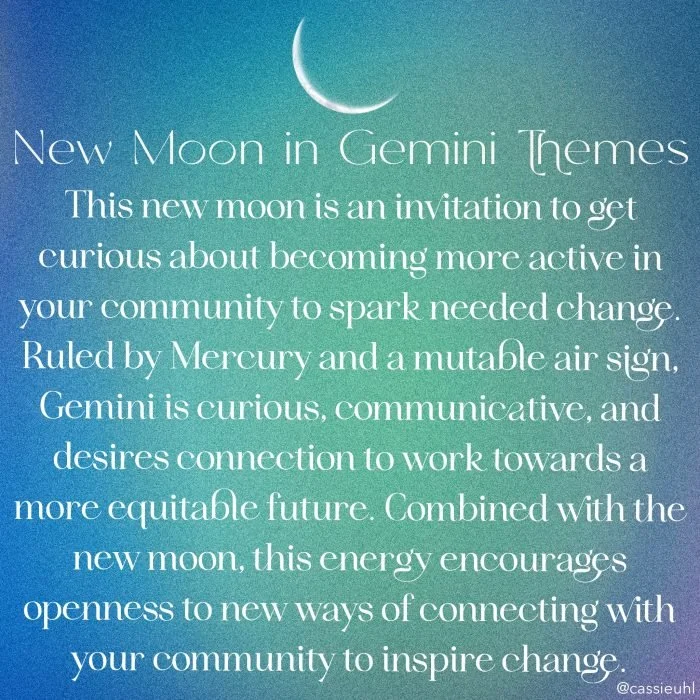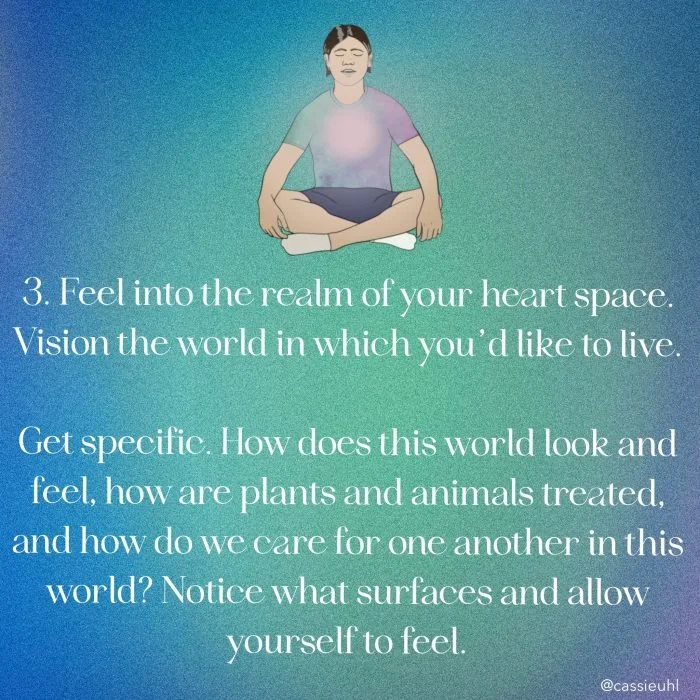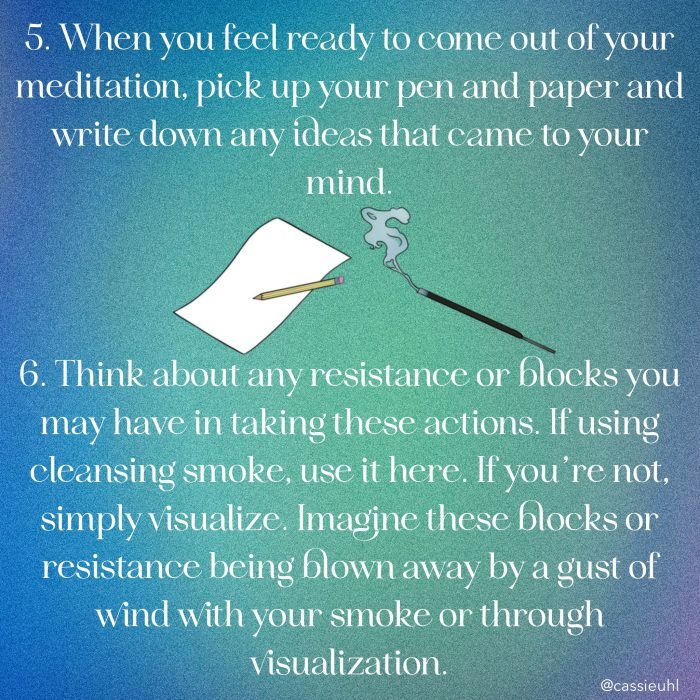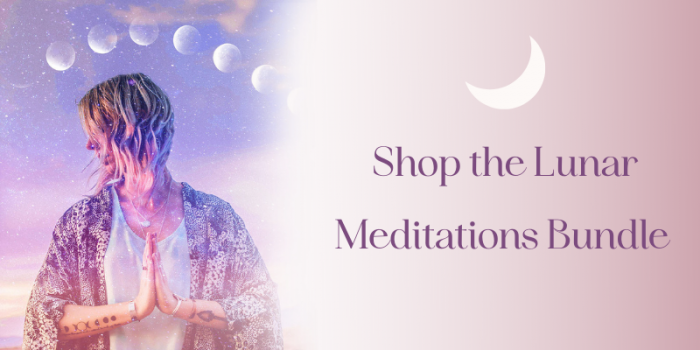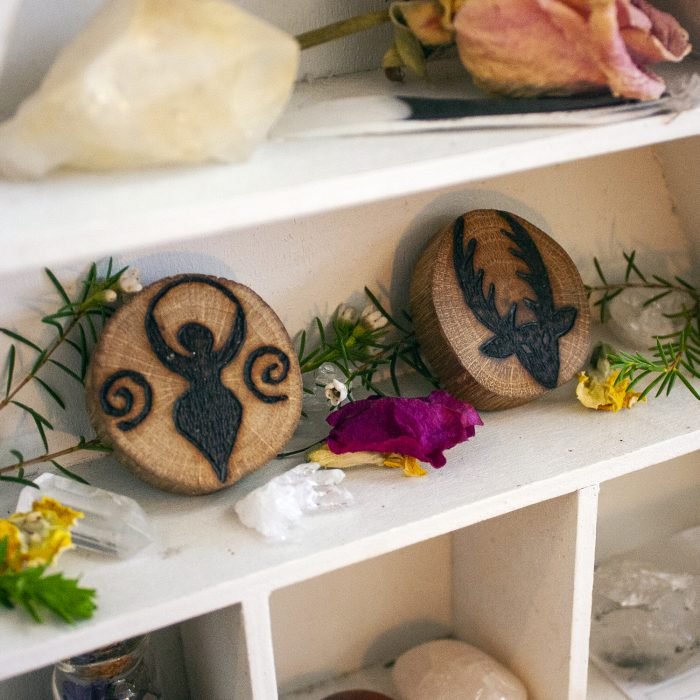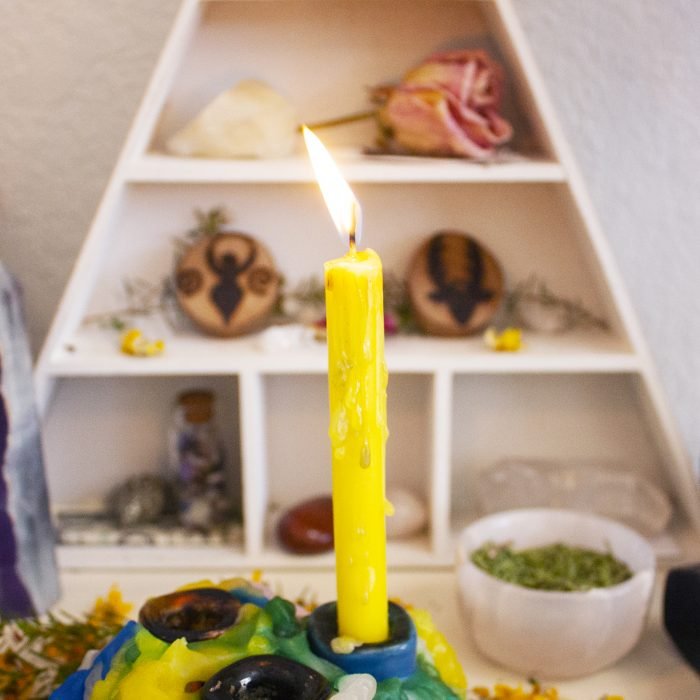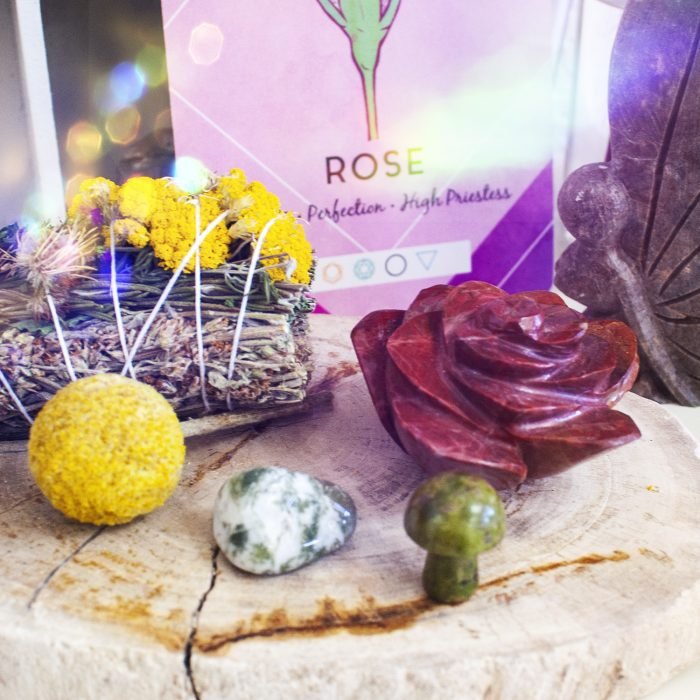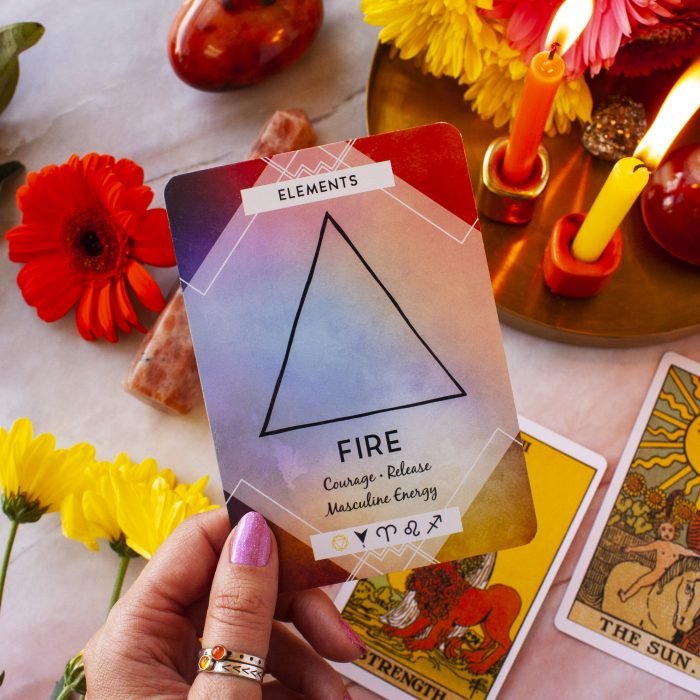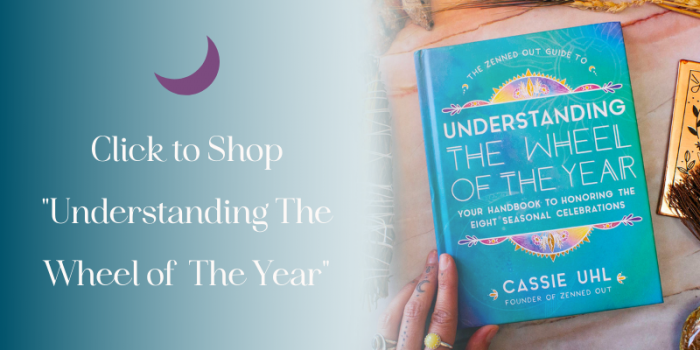Joyful Surrender in the Season of Shedding
Every plant and tree that cycles through the seasons knows that at some point, it is time to return inward and be held by the Earth. They don’t fight it and continue pouring their energy into their fruit until they know it’s time to turn inward or die. They surrender fully to the season and even continue expressing themselves and growing. The land has been whispering that there’s much more to surrender and it doesn’t always mean giving up. Surrendering can be joyful, even pleasurable.
Every plant and tree that cycles through the seasons knows that at some point, it is time to return inward and be held by the Earth. They don’t fight it and continue pouring their energy into their fruit until they know it’s time to turn inward or die. They surrender fully to the season and even continue expressing themselves and growing. The land has been whispering that there’s much more to surrender and it doesn’t always mean giving up. Surrendering can be joyful, even pleasurable.
Fall is a season of contractions helping us descend into Winter. Similar contractions are present during Spring. However, the essence and energy of each contraction phase differ significantly. In the Springtime, the season of the Maiden and the curious air element brings contractions to push us up and out from the underworld into the first blooms of the season. It’s an expansive and seductive time that is the portal that pushes us out through the underworld.
On the opposite side of the seasonal wheel, we have the Autumn Equinox, another season of contraction that pulls us down and into Winter, back into ourselves and the underworld. It is a season of surrender and shedding. Yet, it is also full of pleasure and fullness. It’s simply a different flavor than the Spring Equinox, and why wouldn’t it be? There’s a distinct difference between rising versus descending into the underworld. Both are sacred and needed.
Listen to this post on my podcast here.
As I’ve sat with and observed the guardian Hawthorne tree that lives outside of my home over the seasons, I’ve watched her push her blooms outward in Spring and am now slowly watching her berries redden and ripen as the weather cools. Her energy in this season is still one of expansion, but it is different. It is not the “look at me” energy of the maiden with her seductive flowers. The energy I receive from Hawthorn this season is “look at all that I can hold” and “look at how much love I can give.” Her round berries mimic the fullness of this season, the fullness of immense holding, giving, and joyful surrender.
The Hawthorn tree outside my home is not the only place I’ve seen and felt this energy. I can see it in the ripening apples, the browning grain, and the plants drooping closer to the earth below them. The easiest way to drift into the underworld is to surrender to it. In a society that, by and large, avoids the underworld and is generally death-phobic, consciously surrendering to seasons of slowness or stagnation might feel strange and difficult. It certainly has for me and continues to be a place of careful awareness. As usual, the earth, which you and I are a part of, offers constant examples of how we might do this from seasons, the moon, and our plant and animal kin.
In this share, we’ll dance with the theme of surrender and ways to find more joy in it. I’ll share reflections on the water element and a simple practice to connect with water and the theme of surrender. I’ll also discuss the importance of struggle regarding surrender and a simple plant infusion to help you ease into the season.
Some seasons can feel more present than others if you are spiraling through a similar personal season. This season, as a mid-life mother with small children and a caretaker, feels P-otent. If you find yourself in a position of frequent caregiving, whether that be for your children, elders, or community, you might, too. It is helpful to name how seasonal shifts affect us differently depending on your current phase. Of course, part of this is being able to name and be with the phase you’re in. I’d like to offer you a moment to pause to think about what season your life seems to be spiraling through in this transitional time. Are you in a phase of discovery and exploration, radiance and expansion, giving and caretaking, surrender, and reflection, or somewhere else? Understanding where you’re in your sacred cycle might help you better understand and relate to the transformations happening in the land and seasons. Of course, there are always cycles within cycles, above and below, within and without. All is connected, so I trust you’ll find some meaning and medicine in this share, even if it doesn’t align with your season.
Let’s begin our dance with surrender by exploring the element commonly associated with this season: water.
Lessons from water on surrender
Water is the element that many associate with the cardinal direction West and the season of Autumn. Early in my practice, I didn’t understand the connection between Autumn and the element of water. Autumn reminded me of leaves drying and dying. It seemed like the opposite of life-giving water. Over several years of working closely with water and themes of death, I have a more holistic understanding of water. Water is a life-giver, but water also asks us to be in flow with and surrender to change, including changes we might not always desire. Water reminds me that I do not need to love the changes themselves, but I can learn how to love myself in them. Water can be gentle, forceful, and everything in between. While walking in Autumn and water, you can surrender to her lessons by choice, or they can be forced on you.
As much as we humans like to think we have complete control over our lives, we don’t, and water can be a potent reminder of this lesson. Water can and has swallowed us up in a moment with floods and sudden downpours. It is a reminder that the feminine creative forces are not always soft and gentle. They can and need to be forceful at times. Surrendering to where and how water chooses to flow requires deep trust.
Joyful surrender offers a portal into being present and at peace with the unknown. I see the element of water as a wise teacher in this realm.
There’s an easefulness that lives in surrender. It can be found in the waning moon, flowing water, an exhale, and the transition from Summer to Fall. Life is change. But, like the moon, who changes every night, she is still the moon at her core. You, too, will embark on endless transformations throughout your life but will remain you at your core. How would you move about the world if you surrendered to the unknowns and constant changes, both within and outside of you, knowing that you will remain you in the end?
Of course, some of this is a personal belief and may not resonate because I believe in reincarnation and the soul. Like the moon, who dies each month, or the water, who cycles through different states of being, I trust that my essence will remain intact and carry on in some capacity.
So how can we be more like water and surrender to our own cycles and others? It’s much easier to find the joy in any cycle when we surrender. Be with, watch, listen, feel, and commune with water. Here’s a simple practice I like to do in collaboration with water.
Surrendering with water practice
I like to lean into this practice and the element of water when I struggle with surrendering to something and want assistance. You can practice this at home or a nearby creek or stream. I love doing this near flowing water, but if that is not accessible, visualizing or thinking about water works just as well.
Open your practice in a way that you are comfortable with. For me, this looks like greeting, thanking the four elements and directions, and connecting with the earth.
If it’s available and makes sense in your practice, orient yourself to the West, the home of the water element, and ask the water if you can bring your struggle to it for help.
How you engage with water now will be unique to you. I like to imagine the water gently flowing through my body, including my struggle. If you are near flowing water, the sound or feel of the water can be helpful if it’s accessible to listen or touch the water. If you are not near water, you can visualize the water flowing around you, imagine how it would feel, or even dictate to yourself what it would be like.
Imagine the water gently softening and soothing your struggle. You may notice the water slowly start pulling parts of it away, parts of your struggle that it’s time for you to release. You might become aware of how it feels to let go of aspects of your struggle and notice other sensations or knowings under the struggle.
Stay with the water for as long as you’d like. When you feel complete in this practice, thank the water and consider giving an offering to the water. You might also want to write down anything that surfaced during your experience with water.
All this said, joyful surrender is not always easy for me and might not be for you. I still struggle often. But I’ve learned to accept the struggle as part of the surrender process. I also think it has a lot of wisdom to offer.
The Medicine in the Struggle
The relationship between struggle and surrender is, I believe, much of the medicine this season has to offer. I find the struggle is what gets me to a state of surrender. Sometimes, I have long periods of struggle. Sometimes, they’re short. I see struggle often in deathwork for the dying and their loved ones. There’s often a denial of impending death, but there will come a moment when that denial no longer serves. The time one sits in the struggle will be different for all, but it has value.
Struggle can be found in the dance of fire and can illuminate what needs or wants to be tended. In the struggle, you can see what’s most important. The struggle is necessary. I do not share these reflections on joyful surrender to imply that it is better than being in the struggle. Being in the struggle is hard. But the struggle also has the power to illuminate. I don’t see the struggle as the problem, but it’s often our lack of resources to be with the struggle that prevents us from being with it. There’s nuance here, too. We all have different relationships and experiences with struggle. My prayer for myself, for you, and all of us is that we can have the presence to know when it’s time to stop being in the struggle and step into surrender, maybe even joyful surrender. Whether that surrender looks like asking for help, walking away from someone, acceptance, or something else will be unique.
One of my favorite writers and speakers is Dr. Bayo Akomolafe, who often speaks of “fugitive spaces.” If you haven’t listened to Dr. Akomolafe, I highly recommend it and will link some of my favorite podcasts in the show notes. He’s featured on the For the Wild podcast and SAND often. I find his words and ideas to be a healing salve in these times. He speaks to “fugitive spaces” here and says, “We need trickster approaches, we need ways of dancing away, or dancing to, fugitive spaces; dancing to sanctuaries where we can shape-shift. Grieving, mourning, even allowing ourselves to partake in pleasurable activities in the face of the storm.” I feel these fugitive spaces are areas of play that do not insist on knowing or constantly striving for all the answers and instead offer a space to marinate in the mystery. When I think of fugitive spaces concerning climate change, I think of having conversations outside of how to curb climate collapse and instead focusing on how we might learn to love each other in climate collapse. I find this requires a great deal of surrender and often think of “fugitive spaces” when I think of joyful surrender and how surrendering can yield new possibilities found only in unknown spaces.
In my day-to-day life, I don’t experience the idea of seeking fugitive spaces to disavow being in right relationship with the earth. Instead, I see it as an opportunity to shift my energy around the topic and my actions. For example, I am involved in local politics and often spend time canvassing for local candidates. I used to do this sort of work with a lot of anger. I’d be so mad that more people weren’t helping. I still do sometimes. More often now, I find myself looking for surrender in my political involvement. I still canvass, but I try to surrender to the parts of it that I love, like community building with like-minded people. I also don’t beat myself up if I can’t help as much as I’d like to. Perhaps there will be a tipping point when more and more of us will release the struggle of trying to force politicians, oil companies, and other people to care about this earth and, instead, lean into ways to love within it. That is the energy I am attempting to bring to my life, which is still a struggle sometimes. I still get angry and spin my wheels, thinking of ways to convince people to care about this earth and continue to change my own habits. But, more and more, I observe and ask questions like, “What or who am I truly struggling against right now?” “Is what or who I’m struggling with of my own making or out of my control?” “If it is out of my control, how might surrendering to it look and feel?” “Can I find any threads of ease or joy within what I’m struggling against?”
There’s medicine in our ability to surrender to the struggles of this current time. When we do, we can get a glimpse of what’s underneath them and perhaps even find new and beautiful solutions, love, and joy.
The joy available in surrender
There is beauty, magic, and deep wisdom in surrender. Surrender lives in the realm of the deeply rooted Wise Woman and the Crone, who trusts that there’s life and even beauty beyond the struggle. Surrendering isn’t giving up or accepting abuse. It’s choosing to sink deeper into the struggle to find the threads of love and creativity within it. It’s easier said than done. At least, it has been for me. I don’t have it figured out. I still get caught up in the questioning, fear, and anger. Sometimes, I overstay my welcome sitting in the struggle. Surrendering also doesn’t mean that everything I surrender to immediately feels amazing. Sometimes it doesn’t. Joyful surrender may not be the answer to the suffering of this world, but I see it as a powerful place to explore finding joy in the mess of life.
Plant allies for the season of surrender
Wherever you are in the world, plants are growing nearby to assist in this seasonal shift, whether you are experiencing Autumn or Spring in the Southern Hemisphere. The magic of our plant kin is that they are so deeply connected to the pulse of Mother Earth that they know what is needed in each season for all to thrive. Here in the Midwest of Turtle Island, Goldenrod and Aster are prevalent and serve as physical and energetic supports for our descent into fall. I invite you to notice which plants are appearing in your local environment and, if it feels aligned, to engage with them.
I love making infusions, what some might think of as tea, with the plants and flowers. An infusion is simply soaking plant material in hot water for a certain amount of time, sometimes 30-minutes, or as long as overnight. After pouring boiling water over the plants I’m working with, I like to allow my infusions to rest in the sunlight or moonlight depending on the energy the plants ask for or I am desiring. I was inspired to make a fall infusion with seasonal plants in my area from Dr. Jacqui of Xálish Medicine and recommend visiting this post she shared on Instagram all about it.
As always, before creating an infusion with any plant, ensure that they are safe to consume and that they are not contraindicated for you by confirming with your healthcare provider. If you have goldenrod and aster in your area, they are generally considered safe to consume, however, always be sure to make sure they are safe for you specifically. I also recommend harvesting by asking consent before taking and leaving offerings. I like to keep a flower essence with me while I’m out to give as an offering.
I created my infusion with a combination of foraged and garden-grown Goldenrod, Aster, Chokeberry, Hawthorn berry, Boneset, Sage, and Yarrow. It was delicious and felt like such a potent way to ease my body, physically and energetically, into the season. You could easily create an infusion of just Astser and Goldenrod for a simple fall infusion.
As the flowers wilt and brown and as leaves shift colors in preparation for winter, I can’t help but notice the joyful surrender in the landscapes around me. I see it in the ripening fullness of the berries on the Hawthorn tree, the lavender plants in my yard stretching their flowers out further and further to catch the sinking sun, and busy squirrels and chipmunks readying their winter harvests. As I reflect upon these changes, I remember that I, too, am part of these cycles. I do not need to know the course of what will be for me, my family, or the rest of us to continue to show up in fullness. Or, perhaps, if I slow myself enough, like the earth, I will feel its pulse and know that all will always be well. I can joyfully follow the rhythms of the earth’s cycles both within and outside. I can serve where I feel called, even when I don’t know how it will look, trusting that if I surrender to my season, I will be guided. I hope within these reflections, you’ve found any permission you may have needed to surrender to your current season and maybe even find the joy in it.
The Nurturing Mother of Late Summer
The golden glow of summer is present but slowly fading. Fruits are ripe as the land continues to give, and the Earth’s love for us can be seen, felt, and tasted. There’s much to celebrate and much to grieve. Burning land, displacement, and smoke-tinged air offer potent reminders of where we are. It feels like too much more often than not. Then I remember these cycles, even human-created, will continue with or without me and that soft spaces are needed. The Nurturing Mother of late summer holds out her bountiful arms to nurture our grief. Soft spaces exist to grieve and be held but sometimes need to be cultivated from within.
The golden glow of summer is present but slowly fading. Fruits are ripe as the land continues to give, and the Earth’s love for us can be seen, felt, and tasted. There’s much to celebrate and much to grieve. Burning land, displacement, and smoke-tinged air offer potent reminders of where we are. It feels like too much more often than not. Then I remember these cycles, even human-created, will continue with or without me and that soft spaces are needed. The Nurturing Mother of late summer holds out her bountiful arms to nurture our grief. Soft spaces exist to grieve and be held but sometimes need to be cultivated from within.
In this month’s Seasonal Magic and Medicine, enjoy reflections on the Goddesses Ceres and Demeter, a short writing about our need for soft spaces, a guided journey meditation to connect with Nurturing Mother of Late Summer, and a ritual to connect with plants in your local environment. Click here to join my newsletter to receive these monthly Seasonal Magic and Medicine articles in your inbox.
Ceres and Demeter
The presence of the Greek Goddess Demeter and Roman Goddess Ceres, who many believe are one and the same, move to the foreground during this season. Ceres and Demeter are Mother Goddesses of the harvest, grain, nourishment, protection, grief, and fertility. They help to ensure and protect a bountiful harvest while providing a warm lap for the impending grief of winter.
L’ete, Ceres – Jean-François Millet (1864-1865). Wikimedia Commons.
In the case of Demeter, she knows her daughter, Persephone, who some view as an aspect of Demeter, will soon return to the Underworld for six months during the dark half of the year. Persephone returns to the Underworld by choice each year, rather than force, as a necessary aspect of the birth-death-rebirth cycle. Monica Sjöö references this in The Great Cosmic Mother, “As the Grieving, determined mother she descends to the Underworld–into social rebellion, role-reversals, personal madness, the dark journeys of introspection and disintegration that precedes creative, visionary power–to rediscover her own soul, retrieve the joyous daughter of self-determining life.”
Ceres was an especially beloved Goddess of the common people of Rome because she offered protection from the Roman empire and more closely resembled the original regenerative Earth Goddesses. I feel this protective essence of Ceres especially potent this season, in the land, and for the masses (human and more-than-human) demanding a liveable future.
We see in these Goddesses an opportunity to be nourished by the land and be held in our grief as we honor cycles of death in the land and ourselves to “rediscover” our “own soul,” as Sjöö puts it.
Creating Soft Spaces
Earth’s cycles persist. Embrace or ignore them, but know they won’t stop because you are them. Where’s your soft space, the unconditional embrace that helps you dance through these bright, burning unknowns?
Soft spaces exist. Flowers bloom, and trees fruit amidst climate collapse as their kin die, burn, or drown. They don’t hide away til it’s done. They lean in to be held and nourished from within and around. They allow it because they know they‘ll have a soft place to land, right here in the land. Swallowed up and held tight by the Great Mother’s embrace, all to rise and do it again.
Who holds you, dear one, when you realize the soft spaces were paved over? Where do you lay your grief and gather your love, or do they lie dormant and stagnant within you?
The cycles will persist, with or without you, and whiteness and money will never be enough to save you. Mother Earth will forever continue to birth, dance, and die.
Every phase has its place in her warm embrace, readying for death and rebirth to continue. She’s breaking the pavement of soft spaces paved over.
Where does it leave you, us? The soft, warm lap of the Great Mother, the Earth, whoever you call them, offers this respite and the wisdom to remember. Their love can be seen in weeds weaving through cracks and Orcas fighting back. Each example a reminder that cultivating soft spaces together makes us much safer.
Is it time for you to allow or to come out from hiding? When we build soft spaces together, they’re much harder to crack. The flowers do not struggle to bloom or do it alone. They take their time, roots connected to all. Taking cues from above and below, guiding them to grow, dance, and die. They know their blooming signals an eventual return to the soft space of compost, yet they move right along. Maybe that’s why we deny our own mysterious callings. We know it’s a surrender to eventually going back home.
So, I ask you again, who holds you, dear one, when you realize the soft spaces were paved over? Where do you lay your grief and gather your love, or do they lie dormant within? Perhaps, we can create soft spaces together, held in the warm embrace of a Great Nurturing Mother.
Nurturing Mother Meditation
What are you grieving this season? Let’s cultivate a soft space within to give it a home. Join me in a live circle to grieve and be held by the great Nurturing Mother of Summer by clicking here. Or, follow these steps to have a meditation journey of your own. As always, modify as needed.
Before you begin, bring something to mind that feels tender and needs grieving. You might decide to have a physical representation of what you are grieving. If so, you can have that with you for meditation, but it is not a necessity.
Create a sacred space for your meditation in line with your practice. There are many ways to do this, like lighting incense, a candle, calling upon guides, and honoring the four directions. You might also like to play soft drumming music, or nature sounds that help you meditate.
Begin to focus on your breath and body. Spend as much time here as you need to feel aware and embodied.
Close your eyes or gaze softly ahead and begin to visualize with your mind’s eye an environment that feels safe. If you work with any guides or allies, you can connect with them here and invite them on the journey.
Notice a door appears, and if it feels aligned, walk through it.
Out ahead, you see a great stone circle. Walk in through the East to the center. From the center stone, orient yourself towards the Southwest and notice a warm golden glow.
As you exit the stone circle and walk towards the warm glow, become aware of how the environment looks, smells, and feels.
With the warm sun overhead, call upon the Great Mother with your grief in hand. She will appear uniquely to all, perhaps as a person or not or as the land itself. Allow yourself to be guided in how you interact with her.
Offer your grief to be held, again allowing your intuitive connection with her to guide you.
Spend as much time here, perhaps sitting in her lap, weeping, or noticing the beauty and nourishment of the season.
When you feel ready to go, thank the Great Mother, and head back towards the stone circle to the center stone. Pause at the center stone before exiting out the east and heading back to the doorway.
Once through the doorway, thank any guides or allies who accompanied you. Open your eyes and return to your space as you are ready. Consider journaling your experience, looking around your room, and having food and drink to help reorient you to your physical environment.
Plant Connection Ritual
This ritual is an invitation to connect deeply with a plant(s) in your local environment as a form of gratitude and nourishment. The plant world’s ability to continue to give fruit amidst our quickly changing world holds wisdom.
This ritual does not require receiving anything physical from the plant (although it could) and might come through as an insight or simply through being present with a plant’s beauty.
Vervain, Verbena Stricta.
You might find it helpful to take some time before committing to this ritual to become more aware of the plants growing in your local environment and notice if any particular plants call to you or if you notice some more than others.
You’ll need:
20-40 minutes
offering (smoke, water, stone, anything that feels aligned with your practice)
plant(s)
Based on what is accessible to you and your body, go for a walk or find a place to sit where there are plants. Doing this does not require a lush forest or prairie and can be done with plants in your yard, community, or even a shopping center.
Once you’ve decided on a location, find a plant you feel called to connect with and sit with or near it. Before connecting with the plant, consider asking permission to connect with it. If getting close to a plant is not accessible, you can perform this ritual as a meditation by visualizing the plant within your mind’s eye.
Notice how the plant supports life and gives to its local environment. Does it have fruit, flowers, or seeds? Are there bugs, birds, or bees on or around it? Is it protecting the soil? Notice the plants, leaves, fruit, or flowers. What do you find beautiful about them?
Consider asking the plant questions. Some to consider might be, “Tell me about your essence?”, “Who do you nurture?”, “What bring you joy?”, “Can I do anything for you?”, or “Would you like to give anything to me?”. Answers might come through as inner knowings, feelings, visuals in the mind’s eye, or inner dialogue.
Act accordingly, and as you can, if you receive invitations to give or receive from the plant. For example, if you feel the plant wants water, bring it. If you feel the plant wants to share itself with you in some physical way, allow yourself to receive it (of course, do not ingest anything unless you know it is safe to do so.)
Thank the plant for its energy and give your offering.
As late summer slowly yields to fall, its beauty and bounty feel especially transient and tender. Our ever-turning cycles are a constant reminder that nothing lasts forever. Fortunately, lasting forever is not a prerequisite to savoring the fruit of the season, the joys of life, or the beauty of the earth. May your grief give way to soft spaces that allow you to be nurtured enough to descend into your own personal underworlds.
Weaving Wisdom Past, Present & Future
The Magnolia tree is the oldest flowering tree that we humans know of. Fossils of Magnolia have been found dating back 58 million years. Some botanists think the Magnolia flower, or something resembling it, may have been the first flower on Earth from which all other flowers descended. Magnolia lived amongst the dinosaurs and continues to flourish today in various species. Magnolia is so old that these ancient examples pollinated with the help of beetles rather than bees because bees did not exist. It has witnessed many of Earth’s phases, expansive, destructive, regenerative, and everything in between.
The Magnolia tree is the oldest flowering tree that we humans know of. Fossils of Magnolia have been found dating back 58 million years. Some botanists think the Magnolia flower, or something resembling it, may have been the first flower on Earth from which all other flowers descended. Magnolia lived amongst the dinosaurs and continues to flourish today in various species. Magnolia is so old that these ancient examples pollinated with the help of beetles rather than bees because bees did not exist. It has witnessed many of Earth’s phases, expansive, destructive, regenerative, and everything in between.
A beautiful Magnolia tree, Magnolia X soulangeana, often called Tulip or Saucer Magnolia, lives next to our house. It was quick to get my attention upon moving here last year. When Spring came, it flowered early, as many Magnolias do, and let me know it was time to weave some magic. The early bloom of Magnolia is something else I find interesting about these trees: they often flower early, losing blooms to inevitable cold snaps, yet, Magnolia continues to thrive.
Magnolia X soulangeana bloom.
How Magnolia and I would work together was still unclear in the early Spring. I’ve learned to allow these things to unfold in their own time. As I continued to connect with Magnolia, both in person and in journey, guidance and direction began to take shape. Others were invited in, Grandmother Cedar and Lilac Tree, so, I began connecting with them too. I’m increasingly taken by the force at which some magical workings move me into actions I do not always fully understand. I now know this to be where the most potent magical workings happen. When I release control around what magic I think is needed, I open myself to the energy currents around me and the wisdom of other beings and spirits I’ve come to trust. I can be an instrument for needed magic to take shape without my human influence, inserting myself as a more communal part of both the physical and non-physical realms. I am simultaneously an integral and insignificant part of the magical workings, as I trust another would bring it to life if I did not.
Throughout this process, I learned how to weave a cord from the inner bark of Cedar and crafted a beautiful three-strand rope as part of this collaboration. I am quite proud of it! Further guidance suggested combining these tree energies in a vibrational or flower essence. However, the water worked with in this process holds more than the flowers placed atop it as there was quite a bit unfolding around it at its inception.
Grandmother Cedar tree and her inner bark used for the rope.
As my practice deepens, I’ve become more aware of collective energy shifts and often feel a need to help midwife energies in or out of the collective. Sometimes, I sense these shifts in small groups of people, the country, or humanity. This was one of those times and felt like the latter. Though Magnolia tipped me off to this project months earlier, these workings culminated during an eclipse season. Which, if you know, you know. Right? Most of this last eclipse season felt like a trance-like blur. Perhaps, for you too?
This collaborative creation was a midwifing in situation, a remembering. Magnolia’s easeful wisdom reminded me that we have access to the same timelines they do. Like Magnolia, we can weave back into the past by connecting with the parts of ourselves that lived in various parts of the world hundreds and thousands of years ago. It’s all there in our blood, bones, and the dirt beneath us that grows our food. As is the future. Magnolia showed me time as an accordion-like shape that can fold in on itself and expand, as though time is simultaneously linear and singular. A feature that enables us to access different points at will, inviting us to lean on the perseverance and wisdom from our past well and healed ancestors and the strength and desires of our future well and healed descendants. Beyond different timelines, I was also invited to explore different parts of my personal timeline for healing, strength, wisdom, and hope. For example, accessing the healed and whole maiden bursting with playful curiosity and desire when needed, knowing I can also access the wise crone who may or may not be fully realized physically yet lives within me now.
The invitation I found in this experience was to become more comfortable navigating and seeking support and guidance from these different timelines, both within myself and the collective. Working in this way felt more like a remembrance than a new practice. It also helped expand the depth of my otherworld support network in ways I didn’t know I needed, which helped me navigate the unfolding present. I think most of us, especially magical and spiritual folk, sense significant changes on the horizon. Our desires as a collective, alongside our plant and animal kin, feel like they’re culminating. Albeit outwardly and by design, it may not appear that most of us have the same overall desires, I believe our desires are more similar than we’re led to believe. Seeds are planted, and it seems all timelines seek to support a bountiful harvest that supports all life beyond humans.
But these transitional times can be messy, confusing, and scary. Our metaphorical growing season may bring pests, drought, or uncertain situations. Messy isn’t bad, but it often requires additional resources to navigate the frequent reorientations needed to move through it. Magnolia impressed upon me some solutions, a remembrance of our ability to weave together the wise and healed ones of the past, present, and future. We need to expand our perspective far beyond the perceived challenges of these times by leaning on the wisdom of the past and future well and healed ones. Well-rooted strength, hope, and love are waiting for you in different timelines, and they are excitedly watching, ready to assist, as are the different versions of yourself.
If you’re reading this, I doubt this is surprising. I suspect it’s information that will feel like a confirmation because it’s energy you’ve also picked up on. We’re in for significant changes here on Earth, but I feel well-resourced and equipped for whatever comes. And, when I don’t, which is also often, I remember that I have the support of the wise ones in all timelines guiding me.
Chanting and weaving the Cedar rope as the essence steeped.
I chanted as I wove the cedar cord over the steeping essence of Magnolia and Lilac flowers, “Wise ones, maidens, mothers, and crones—healed and whole. Past, present, future, weaving together the here and now.” or some variation of it. The essence is bottled, with a portion of the Cedar cord around each bottle, and titled the Wisdom Weaver Elixir. It feels important, but it also feels like the waves of the work are rippling out regardless of who consumes the essence. I do like it, though, and it feels like some of the most meaningful magic I’ve been a part of.
The essence with Lilac & Magnolia flowers & the finished Cedar rope around the glass.
A personal result of accessing these timelines is that I’ve been connecting with a second-generation successor of my children. It’s been inspiring and exciting as most of my spiritual connections have revolved around ancestors and otherworld beings. Connecting with this related being from the future grants me a hopeful and beautiful perspective. Your ancestors have walked through much, as have you and the lineages beyond you who will inhabit this realm, or are already. I’ve certainly enjoyed expanding my community beyond the present by allowing it to weave through different timelines within myself and beyond. Perhaps we’ll need more than ourselves to dance through this phase.
Protection Magic with DIY Witch Bells
There are so many ways to celebrate the season of Samhain, and protection magic is a common theme. With the veil between the spirit and physical realm at its thinnest, it offers us a time to connect with loved ones in spirit, but it can also give rise to unwanted energies and spirits. Taking time to bring in additional energetic protection for yourself and your home is an easy way to address this and honor the season.
There are so many ways to celebrate the season of Samhain, and protection magic is a common theme. With the veil between the spirit and physical realm at its thinnest, it offers us a time to connect with loved ones in spirit, but it can also give rise to unwanted energies and spirits. Taking time to bring in additional energetic protection for yourself and your home is an easy way to address this and honor the season.
I love to do a full house cleansing and blessing for Samhain, which you can learn more about in this past post. After performing a house cleansing and blessings is a great time to introduce additional protection magic like witch bells.
Bells have been and still are used by many cultures for various spiritual practices, and they’re a standard tool for most witches and folk magic practitioners. Bells are a common cleansing tool, and the loud sound is said to scare off malevolent spirits.
My favorite thing about witch bells is that you can be so creative with them and customize them, both in appearance and in intention, in so many ways. I’m going to share general steps to craft your witch bells so that you can create protective witch bells that work for you and your space. Here are some general considerations for all magic making.
The efficacy of your spellwork and magic will consistently increase when you co-create with items with which you have an established relationship. If you’re wondering how to have a relationship with a tree or a stone, here are some simple options.
Meditate to connect with the energy of the plant or item.
Spend more time with the plant or object.
Give offerings to the plant or item.
Always ask permission before taking things from a living plant or tree.
You don’t need to use the same items I use for my witch bells. I encourage you to use items unique to your environment and needs. If there are plants, stones, or things that represent safety, protection, and clearing to you, that is great. Use those.
DIY Witch Bells
You’ll need the following:
30-90 minutes
String, yarn, or ribbon of choice
5-10 bells
Optional: incense or herbs to energetically cleanse your items
Optional: Something to hang your bells from, like a wooden circle, a pentacle, or something else that fits your needs.
Optional: Any additional items (crystals, beads, stones, plant items, etc.) that correspond with your intention.
Watch the steps in action here.
Steps:
1. Take some time to plan your specific intentions for your witch bells and prepare all of your items. Consider energetically cleansing your items before you begin with smoke, incense, or something else in your practice.
2. If you’re crafting something to hang your string from, do that now. I used fallen apple tree twigs to make a circle and a pentacle. This was the most time-consuming part for me! I am pleased with how it turned out, but wood circles or mini wreaths can be purchased at most craft stores if you want to go an easier route. You can also opt to make a loop out of your string and skip the circle.
3. It’s time to attach your strings or ribbons. I made simple loops to secure mine, but you could also tie them onto your circle. As you begin knotting and tying, it’s an excellent time to start focusing on your intention for your bells. You could visualize an auric energy field growing around your house, offering greater protection and peace. You could also envision inviting any healed and well ancestors into your home and blocking any who are not.
Tip: Consider your color choice for your string and ribbon. Each color carries a different energy. I used black and a deep red for grounding and protection.
4. Now, you can attach your bells. Use any bells you prefer. You may need to tie them on or use pliers. Add as many as you like, and keep your intentions in your mind. You could even repeat a chant to increase the energy.
5. If you’ve opted to add extra items like stones, beads, or plant items, do that now. I tied Rowan tree berries and Hawthorne tree thorns into my ribbon and strings for additional protection and grounding.
6. When your witch bells feel complete, hold them in your hand, focus on your intention, and consider reciting a particular phrase like, “Protect and bless this house, so it is,” or anything else that feels good to you.
7. You’re all done! Hang your bells on your front door knob. Consider charging it under full moons or giving it a good energetic cleanse every once in a while to keep them happy.
Wishing you a magical Samhain! Check out more posts about Samhain here.
Water Offering for The Autumn Equinox
The Autumn Equinox, which usually falls between September 20-23 in the Northern Hemisphere, shifts us westward on our seasonal wheel. The west corresponds to the element of water in most mystical and earth-based spiritual practices. It signals a time to start moving inward after the busyness and activity of the spring and summer months.
The Autumn Equinox, which usually falls between September 20-23 in the Northern Hemisphere, shifts us westward on our seasonal wheel. The west corresponds to the element of water in most mystical and earth-based spiritual practices. It signals a time to start moving inward after the busyness and activity of the spring and summer months.
Wheel of the Year from Understanding the Wheel of the Year by Cassie Uhl
In this short share, I’m offering you a simple ritual to honor water with an offering to the water spirits and a message from water that I received. This ritual is one way to mark the shift in seasons, welcome the element of water into your home, and give thanks for its healing gifts and life.
Water Offering Ritual
I encourage you to make this water offering ritual your own as much as possible and use these steps as a framework. The more personal you make this ritual, the more meaningful it will be. Watch my water offering ritual here.
You’ll need:
A vessel or bowl to hold some water
Enough water to fill your vessel (spring water, water from a moving creek or river, or water that you’ve structured is ideal)
Plant items from outside that have either fallen naturally or that you’ve asked permission to gather from your environment
Optional: a few drops of special water you have on hand like moon water or water from a special location
Optional: any corresponding decorations or crystals to add in or around your water vessel. For crystals, moonstone, quartz, smoky quartz, and rutilated quartz are all great options.
Steps:
Collect your items with care and intention, and have them ready and organized nearby before you begin.
Spend 3-5 minutes centering yourself, grounding, and connecting with your breath and body in a way that feels good to you.
Cleanse the space, yourself, and your items using a cleansing method of choice. Mugwort smoke is a great option for this particular ritual as it corresponds with water, but any cleansing herb will do.
Set up your water vessel and any accompanying crystals or items intuitively. You could place some crystals in your vessel if there is space.
It is time to pour your water into your vessel. Before you do so, hold your water, feel connected to your earth and your body, and infuse the water with love, respect, or anything else you feel called to add. Feel the energy flowing from your body into the water. Pour your water into your vessel, continuing to infuse it with an energy of love and respect.
Add any items on top of your water, like leaves, herbs, or flowers, with the intention of each item being a gift to water.
Now it is time to invite in the water spirits and thank them. Do this in a way that feels meaningful to you. You could keep it short and sweet by saying, “I invite in the water of the west for the Autumn Equinox and thank you for your healing,” or you could share a poem, a longer statement, or even a dance with the water. The point of this is to invite in, connect with, and thank the water spirits for this change of season.
Consider spending some time here with your water to notice any shifts or changes in your energy or environment. You could also spend some time meditating, journaling, or creating. When you feel ready to end the ritual, thank the water spirits for joining you.
You can keep your water vessel up for as long as you’d like, filling it anytime it becomes low and connecting with it often. Keep it up for a full lunar cycle or until the next full moon is a great option.
When you feel ready to deconstruct your water offering, pour it outside back into the earth while giving it thanks.
Message from Water
I dissolve, swirl, and heal. I am both forceful and passive. Feel my soft spirals erode and bring what is ready to heal to the surface. Feel my wild and raging storms returning you to the womb of the earth. I am mystery. I am healer. I am life, and I am the harbinger of death. Respect me and honor my sovereignty. In doing so, you will honor yourself.
Water element card from The Ritual Deck.
If you’d like to learn more about the Autumn Equinox and ways to celebrate the season, click here for past blog posts.
Learn more about the magic of water in this past post by Jen Isabel Friend.
Equinox blessings! Xoxo Cassie
Befriending Discomfort & Transforming with Fire of the South
Summertime shifts us towards the south and the element of fire on our sacred seasonal wheel. The fire of the south offers a time of passion, growth, culmination, action, transformation, and, less frequently talked about, discomfort.
Summertime shifts us towards the south and the element of fire on our sacred seasonal wheel. The fire of the south offers a time of passion, growth, culmination, action, transformation, and, less frequently talked about, discomfort.
In this share, you'll learn more about the element of fire, some of the wisdom it has to offer, its connection to discomfort, common correspondences for south and fire, and three ways to engage in ritual and magic alongside fire. Before we dive in, let's explore the position of the south and fire on our seasonal wheel, and what it means.
Listen to this post on the podcast, here.
The South and Summer Solstice is the full moon of the year on our wheel of seasons, and the neighboring celebrations, Beltane and Lughnasadh, are the peek of the waxing and waning energy of the seasonal year. We live amidst fiery energy until we reach the Autumn Equinox and shift fully towards the West and the element of water.
campfire, bonfire by the sea, sunset
Astrologically, the Summer Solstice moves us into Cancer season and then later into Leo. The Summer Solstice and Cancer season alignment is one that confused me for a long time. I had difficulty seeing the connection between the water sign of Cancer, the south, and the element of fire. I recently listened to the Summer Solstice episode on Tarot for the Wild Soul by Lindsay Mack. She did a good job of breaking down these overlaps, especially in relation to the Chariot card, which is the card that corresponds with Cancer.
The Chariot card offers a side of water that encourages action, movement, and being in the flow. The fire connected with this season inspires this Cancerian energy to come out of its safe and cozy crab shell and begin taking action, and tap into any wells of emotional energy you may be harboring as fuel. You can visualize the stagnant pond vs. the flowing stream as an example. It's like a marriage of water and fire. This season's fire forces us out of our comfort zone, and the water of Cancer season encourages us to be in a state of flow with all that arises and the discomfort of it all. It's a call to feel and act, act, and feel, and to not get stuck and stagnant amidst it all.
The Chariot card featured from Journey Tarot . Water card featured from The Ritual Deck.
It makes me think of the famous quote by Anais Nin quote "And the day came when the risk to remain tight in the bud was more painful than the risk it took to blossom." These south-facing seasons are asking us to notice where we must come out of our shells and blossom in new ways. I don't know about you, but I have never gone through an easy or painless transformation.
Every transformation has been uncomfortable in my spirituality, business, and relationships, but they've also been necessary, inspired growth, and made me a better person. And it will be like this on a collective level, which can feel scary and uncomfortable. The deep transformations we're facing require many of us to face and look at parts of ourselves we'd rather not look at and that, in many ways, we've been trained not to look at, especially folks in white bodies like myself.
It may feel enticing to sink back into those still waters or the cozy crab shell, but the gifts of growth are calling each of us in unique ways needed to create the changes we need on an individual and collective level to create a more equitable and sustainable world. The element of fire is waiting to be called upon to assist. Because if we do not, the wildness of fire will, eventually, create the transformations that need to happen whether you're ready or not. Here’s a sweet message about the need for fire from the book, The Great Work by Tiffany Lazic.
Passion is the energy of fire that propels us toward that which activates our Spirit. In
order to create any new thing, there needs to be a spark—something that leaps across
the gap between the material and the ethereal, bringing the two together and
transforming them both in the process. Fire is the motivator, both the soft flame that
gently guides and the blinding conflagration that changes all in an instant.
The Great Work by Tiffany Lazic
How can what's dear to your heart be used as a spark to bring about transformation or change? This is a time to notice what's arising for you, your family, and your community. What is calling out for attention to be more closely examined with the light of a fire or burned up and transformed? Let's explore some of the wisdom fire has to offer us.
Wisdom of South and Fire
To understand the scope of fire, we must honor all of its faces and abilities. Like all of the elements, fire can nourish and destroy. It's easy to see the nourishment and the destruction of fire, especially in the summertime. The nourishing warmth of the sun inspires plants to grow and thrive. Fire is also the seat of the hearth and home because it offers us warmth and nourishment. Yet, we can also see the capacity for fast-acting destruction that fire holds,
The multifaceted nature of fire is reflected in its corresponding colors, red and green. Red holds the energy of passion, intensity, and the ability to destroy and transform, while green holds the energy of nourishment and growth. Like all the elements, fire offers a spectrum of wisdom. It offers both destruction and sustenance.
Having been embedded in various spiritual spaces for over two decades, especially in white spaces, I can confidently say that there's a focus on the more "positive" aspects of fire like passion, growth, and action and far less on themes like destruction and discomfort. I'll be focusing on the latter for this section. Though destruction is often lumped into the "negative" side of the spectrum, it also has a lot of important gifts to offer. Destroying or burning up is a necessary part of the transformational process. We cannot transform without letting something fall away or die. Wrapped up in this process, for some of us, is a need to be with discomfort and build a greater capacity to hold discomfort. Fire can be the spark that inspires us to continue facing our discomfort and bolsters our ability to act alongside it.
Transforming and Expanding Our Capacity for Discomfort
As we move deeper into this conversation around expanding our capacity for discomfort, I want to share a quote from a little book I often reference, "The Sacred Wheel of Our Ancestors" by Roberta Lee. She is one of my mentor's mentors.
Noon. The Summer Solstice. Heat all about us. The sun beating down upon our heads.
Thirst. Fire. This is the place to come face to face with ourselves for sure. Modern
society seems to be obsessed with comfort. And sacred suffering is feared and frowned
upon. We all suffer. Let us not waste it by trying to avoid it… Let us not resist the heat, the hard
times; let us embrace them and this time of year, this part of the Wheel, this part
of Life and in doing so, we notice that the pain is abated and becomes our history and
joins the other drops of water in our well of experience.
Roberta Lee, Sacred Wheel of
our Ancestors
The fire of the south does not lie. It is truth at its core. It burns away and exposes us. It makes us naked and vulnerable and brings us face to face with our truths. It can be painful when you approach fire with a desire to transform. Like the frame of a house revealed after its exterior has been burned away, fire shows you what's on the inside. Each layer that is burned away offers different stories and wisdom. Stories and wisdom that beckon you to look at and feel everything on a soul level, the good, the ugly, and everything in between. Each layer gives more wisdom and fuel to transform.
Herein lies much of the discomfort associated with fire, which is two-fold. First, we have the discomfort of being with, witnessing, and feeling the pain and the truth of what is no longer working or that you can no longer view as acceptable. The second, I'd argue, more illusive part of the discomfort brought about by fire is the discomfort of not knowing what's on the other side of a transformation. When we decide to return to ash from the fire, what happens next? What's on the other side?
I think collectively, we are sitting in a time of transformative fire, on the precipice of something new, but still unsure what it will look like and how exactly we will get there. So many of us, myself included, are feeling the intense discomfort of this time. Knowing deep down that more needs to happen, much faster to save ourselves, our more than human brothers and sisters, and the planet.
It is uncomfortable to witness the suffering and to suffer right now. It is also uncomfortable not to know what's on the other side. We are in the throws of a significant and profound transformation. However, the not knowing, the mystery of where we're headed does bring one gift—a gift of unlimited possibilities. These limitless potentialities are part of this collective transformation bringing me a sense of peace and the fire to keep going. There are so many solutions, and outcomes are yet to be discovered. The unknown is uncomfortable, yes, but there's also hope there.
Most transformations we embark upon are sparked by an unwillingness to allow a certain action or feeling to persist. As we collectively sit in the heat and discomfort of this time, I invite you to continue to sit with the discomfort while reserving space for all the unknown solutions and outcomes yet to unfold. I'd further invite you to continue working towards a more equitable and sustainable planet as that's where those unknown solutions and outcomes live. We won't know what's on the other side of this current transformation until we walk through it together.
Fire element card featured from The Ritual Deck.
It's important to note here that the discomfort of this time has not been evenly dispersed. Large groups of people have been sitting in the discomfort of this transformational time since the onset of spreading patriarchy, imperialism, white supremacy, and capitalism. White-bodied folks, like myself, have been taught to avoid this discomfort, separate ourselves from it, and seek comfort at all costs, even at the expense of other's lives and our planet. In contrast, many BIPOC communities around the world have been forced to become comfortable living in discomfort.
I want to take a moment to give credit to one of my teachers, Thérèse Cator, whom I had recently completed her course, Embodied Allyship. Comfort, discomfort, and nervous system regulation were big themes in the course. I want to credit her for how I've made many of these parallels between the element of fire and this time.
What if the constant seeking of comfort is what's keeping you small, keeping you from growing, and keeping you disconnected from your power? I want to offer that it is. Sitting in discomfort builds resiliency, a kind of resiliency that many folks with black and brown bodies have been forced to build and that myself and fellow white-bodied kin have been lulled into avoiding. I'd argue that for many of us, our proximity to comfort is what's keeping so many silent and complacent. The transformation we're in is going to happen one way or another. We can sit back and let it happen, or we can work together to ensure that when we come out the other side, we'll be more equitable and sustainable.
I'm not advocating that you should be a masochist. I'm advocating that we're in an opportunity calling us in, especially white-bodied folks, to build our capacity to hold more discomfort and bolster our resiliency. With that also comes a greater need to make space for joy and pleasure. We must become more comfortable being in discomfort and simultaneously recognize when we need to pause and step into joy and pleasure. We need to become the pendulum moving from side to side, not remaining stuck only in the comfort that keeps us small and tame.
Some questions to consider and that I've also been sitting with.
What's making you uncomfortable right now?
What areas of discomfort have you been avoiding?
What might that discomfort have to teach you?
In what ways could you lean into play and pleasure more deeply to build your resiliency and explore your discomfort more deeply?
I will share some of the fire rituals I've been leaning on to help with this in the ritual section later in this share. Let's take some time exploring common correspondences for south and fire.
South Correspondences
Correspondences are ways to honor and invite in specific energy. They're also a way to layer in specific energies to spellwork and magical practices. Understanding common correspondences, or similar energy, gives you the tools to craft your own magic and rituals with fire and the cardinal direction south.
Moon Phase: Full moon
Phase of life: Motherhood / Adulthood
Themes: Fulfillment, action, transformation, magic, confidence, strength, passion, discomfort
Color: Red, green
Element: Fire
Time of Year: Summertime
Time of day: Midday
Energy center: Solar plexus
Items and tools: fire, candles, wand, brass items, anything that personally represents fire or summertime for you
Crystals: Sunstone, yellow jasper, red jasper, rutilated quartz, sodalite
Plants: Rosemary, cinnamon, clove, ginger, sunflower, anything in bloom near you during summertime
Tarot: Suit of Wands, the Sun card, Strength card
Ogham: Hazel, Apple, Vine
Runes: Sowilo, Wunjo
Planets: Sun, Mars, Jupiter
Zodiac: Aries, Leo, Sagittarius
Artwork featured from Zenned Out Guide Series by Cassie Uhl with Quarto Knows.
Rituals to Connect with South
Here are some ways to work with and honor fire in your spiritual practice. These are all tools and rituals that I've personally used or plan to and have found helpful. As always, take what you like and leave the rest. I'd also like to read an important reminder from the book The Path of Druidry by Penny Billington before we embark on this section.
Each element can harm, but fire is the most mercurial of the elements; it is lightning-fast
and operates to its own rules. Treat any naked light with respect and never leave it
unattended. Fire is living. Think carefully about an appropriate way to extinguish a flame
and stick to it. Many Druids pinch out a candle flame rather than use the breath of life to
extinguish it. Choose a method, and make it a mindful action each time.
When you light fire, you are connecting to an action shared by our ancestors, often with
prayer and gratitude. Some of these ritual customs still survive in the old prayers from
the highlands and islands. Devise your own simple ritual words or phrases to be part of a
living chain of devotion.
Penny Billington, The Path of Druidry
I think that respect is something I've not discussed enough in the previous episodes on the cardinal directions and elements. It is essential for all of the elements. All of them have the power to nourish or destroy, especially fire.
Dance Meditation to Connect with Fire
When I think of the energy of fire, I think of dance. Like creating visual artworks, many of us have an idea of what "good" dance or movement is intended to look like. Allowing our bodies to move in ways that don't match what we've seen as "good" dance or movement can be uncomfortable. I love to dance, but I am not a professional or trained by any stretch of the imagination. Becoming more comfortable with my body's organic and natural movements has taken time. I say this to remind you that wherever you're at with your relationship to dance or whatever accessibility you have to move your body, there's wisdom and magic to be found.
Anytime I write these episodes for the directions and elements and hold space for guided journeys to them, I spend a long time journeying to the direction and element. When I journeyed to the south to connect with fire, it asked me to move and shake my body. I was overtaken by the energy of the fire working through my body. I let go entirely and gave myself over to the process of connecting with its power. Having a private sacred space or being surrounded by folks you love and trust to do this work can be helpful.
Something important to remember when engaging with elemental energies is that, more often than not, insight and wisdom are offered to us not through oral dictation but through states of being fully embodied and in communion with different energies. Why would fire speak to you in words? That is not the language of fire; fire flickers, dances, and moves. This is the medicine fire offers. This goes back, again, to get uncomfortable. Held in the discomfort and vulnerability of giving your body over to being with fire, you open yourself to embodying and holding new truths. If dance and movement feel like they're going to push you out of your comfort zone, I think the medicine will be even more potent!
If you feel called to connect with fire in this way, here are some simple suggestions to get started.
Carve out 20-60 minutes for yourself.
Spend about five minutes connecting with your breath and body (or any other rituals that help you root into your body) to soothe your nervous system.
Create sacred space in a way that feels good to you. This could be casting a circle or calling on guides, Gods, or Goddesses you work with.
Optional: light a candle to honor fire and assist you in connecting with it.
Go within or stare at your candle flame and state your intent to connect with fire.
Imagine yourself meeting the fire element. What does it look like, and how does it make you feel?
Take this time to connect with the fire and learn from it. Perhaps it will inspire you to move. Maybe it will not. Trust what comes through and stay with it for as long as you'd like. Your experience may be different than mine, which is normal and okay.
When you feel complete, be sure to thank the fire before leaving and ask if there's anything you can do to reciprocate your time with it and any wisdom you received.
Close your space and consider journaling about your experience. Spend some time reconnecting with the world around you and perhaps have some food and drink.
If this is something you feel you'd like support with, click here to join me in a guided journey to the south to connect with the element of fire.
Candle Magic for Transformation
If you've been hanging out around me for much time, you probably already know that I'm a big fan of using candles in my practice. Candles are a simple but powerful tool, especially when wanting to connect with the element of fire. I also think they're a great introductory tool to spellwork. You can make your candle magick as simple or complex as you want; all you need is a candle, matches, and some time.
This is a topic I've covered extensively on my blog and in previous episodes, so I'm not going to go into much detail here. Check out the show notes for direct links to previous blog posts on candle magick.
If you're new to working with candles or would like a simple ritual to start. I'd invite you to select a candle color in line with your intentions, hold it while infusing it with your intention, and sit with it as it burns. As you sit with it, notice the movement of the fire and how it dances and moves. Working with candles can be helpful while practicing dance or meditating on fire.
I've been using paraffin wax chime candles for about six years, as long as I've been practicing candle magick. I usually recommend these, but after further research, I plan to switch to beeswax candles. Unfortunately, paraffin candles are a by-product of fossil fuels and are therefore harmful to the environment and unsustainable. I have quite a stockpile of paraffin candles from my store, so it's going to take me a while to work through them before I switch to beeswax.
If you are starting out, I'd recommend rolling your beeswax candles or finding a supplier for premade beeswax spell candles. I found a few lovely and affordable beeswax spell candle options on Etsy with a quick search and bought some for Lugnasadh while writing this post, haha! Beeswax candles are more expensive, but they are lovely and a sustainable and less harmful choice.
If you'd like step-by-step instructions for a candle spell, click here to check out a previous post.
Building Fire and Fire offerings
I'm wrapping two up into this section because they can be used in tandem or separately. Another obvious way to build relationship with this season and the element of fire is to spend time building fires, especially in ways our ancestors did. I have built fires in the past while camping but do not have experience building fires in ancestral ways. This is something I look forward to exploring this fall. There's a lovely article by Dana O'Driscoll of Druids Garden that you can check out here where she discusses the power of learning how to build fires in ancestral ways to connect with fire and our ancestors more deeply. Dana writes in her article,
In every way, fire reconnects us to our roots, to those ancient ancestors who gave us
such an important gift. When I look at the fire from this perspective, I realize that fire is
my most important ancestral gift, and thus, one of the best ways to honor my ancestors
is to learn and understand fire, to work with fire as they might have, to learn to start and
build fires, and honor them through this practice.
Dana O'Driscoll
If building fires isn't accessible to you, it certainly wasn't for me in my Arizona home. I'd encourage you to build this kind of ritual relationship by lighting candles or incense to connect with fire in this way. One thing I've learned from one of my teachers, Danu Forest, is to treat each flame as a unique fire spirit. Each candle I light invites in the presence of a unique fire elemental that I can learn from and connect with. Seeing each fire as an individual, living entity helps me take more time and care in engaging with fire.
Our new house has space for a fire pit, and we plan to build one before the Autumn so we can enjoy it this fall and winter. I'm looking forward to connecting with fire more deeply in this traditional way. My fire magic is about to get a serious upgrade!
Finally, and this goes for any interaction with elemental energies or spirits, finding ways to be reciprocal and give offerings is a powerful way to build relationship. Song, dance, art, chant, poems, and herbs can all be beautiful offerings to the fire. Consider asking your fire what it would like as an offering. The article I mentioned above by Dana O'Driscoll also gives some wonderful suggestions for fire offerings.
For example, my recent fire interactions prompted me to write a poem for the fire. I placed it on my altar and have read it aloud daily as a further offering and a form of connection. Building a relationship with fire through reciprocity is yet another tool for learning from fire and building our capacity for the discomfort associated with transformation.
I hope these offerings have stirred your internal embers and perhaps even sparked a fire of powerful resiliency within you! If you'd like to explore the element of fire more deeply, I encourage you to join me or purchase the replay, "Journey to the Fires of Transformation."
New Moon in Gemini Ritual
The new moon in Gemini is an invitation to get curious about becoming more active in your community to spark needed change. Ruled by Mercury and a mutable air sign, Gemini is curious, communicative, and desires connection to work towards a more equitable future. Combined with the new moon, this energy encourages openness to new ways of connecting with your community to inspire change.
The new moon in Gemini is an invitation to get curious about becoming more active in your community to spark needed change. Ruled by Mercury and a mutable air sign, Gemini is curious, communicative, and desires connection to work towards a more equitable future. Combined with the new moon, this energy encourages openness to new ways of connecting with your community to inspire change.
This ritual offers you a format to ask important questions and explore how you might open yourself to cultivating connections to bring about positive change in your community. Big change requires collaboration, communication, and connection. If you feel nervous or unsure about where to start, this ritual will create a supportive container for curiosity.
If you enjoy this ritual, I invite you to share it with someone else who might benefit from it.
Themes for this new moon: Community, communication, connecting, reciprocity, curiosity
Element: Air
The ideal time to perform this ritual is the day before the new moon, on the new moon, or the day after the new moon.
You’ll need:
10-20 minutes of quiet and uninterrupted time
Pen and paper
Optional: cleansing smoke of choice
Optional: apatite, turquoise, fluorite, chrysocolla, or quartz
1. Create sacred space by grounding yourself and connecting with your breath and body. If casting a circle or calling in the quarters is in your practice, you could do this too.
2. Sit, close your eyes, and begin to connect with your breath and body. If you’re working with a suggested crystal, you can hold it or place it near you to help you tune in.
3. In this space, allow yourself to feel into the realm of your heart space and vision the world in which you’d like to live. Get specific. How does this world feel, how are historically marginalized people treated, how are plants and animals treated, and how do we care for one another in this world? Notice what surfaces and allow yourself to feel. Stay here for as long as you want to or are able.
4. After spending some time visualizing this version of the world, ask, “What is my role in my community to bring about this world?” or “How can I begin aligning myself with this new world within my community?” Breathe and allow your mind to take you where it wants to go. Be open to visualizations, messages, or feelings that may arise.
5. When you feel ready to come out of your meditation, pick up your pen and paper and write down any ideas that came to your mind.
6. Take a moment to think about any resistance or blocks you may have in taking these actions. If using cleansing smoke, use your cleansing smoke here. If you’re not, simply visualize. Imagine these blocks or resistance being blown away by a gust of wind with your smoke or through visualization.
7. Holding your paper in your hand and your crystal if using one, visualize yourself taking these actions in your community to help bring about the world you desire. Stay in this space for as long as you like. Place your paper on an altar or somewhere you’ll see it regularly (if using a crystal, place your crystal on top of the paper.) Allow it to stay there until the full moon.
8. Before the full moon, schedule time to be taking steps towards the actions you listed out to get involved in your community.
This new moon ritual can be adapted or used for any new moon or new moon in Gemini. As always, take what you like and leave the rest.
Tending to Your Inner Fire for Beltane
The warmth of fiery Beltane is nearly upon us, and this year (2022), with the addition of a new moon in Taurus with a solar eclipse! It's sure to be an intense and exciting Sabbat. Beltane has always been one of my favorite seasonal celebrations. I always find that its energy is palpable in the air. There's such celebratory energy to this season, which I feel like we could all use a bit more of right now. I know I certainly can!
The warmth of fiery Beltane is nearly upon us, and this year (2022), with the addition of a new moon in Taurus with a solar eclipse! It's sure to be an intense and exciting Sabbat. Beltane has always been one of my favorite seasonal celebrations. I always find that its energy is palpable in the air. There's such celebratory energy to this season, which I feel like we could all use a bit more of right now. I know I certainly can!
Beltane, also called May Day, is one of our cross-quarter celebrations between the solar celebrations of the Spring Equinox and Summer Solstice. For those living in the Northern Hemisphere, Beltane falls on April 30 and May 1 and on October 31 and November 1 in the Southern Hemisphere. In contrast, others may observe more traditional practices of honoring Beltane after the local Hawthorn trees flower.
Listen to this episode on my podcast, Rooting into Wholeness here.
You'll learn more about Beltane, its history, common correspondences, tips for connecting with Bel, a God associated with this season, and rituals to honor this season and tend to your inner fire.
What is Beltane
For many, Beltane is one of the most important celebrations on the Wheel of the Year. It is our crescendo of energy before the Summer Solstice. Beltane is opposite of Samhain on our seasonal wheel and therefore carries similar but unique energy. Much like Samhain, the veil between the physical and spirit worlds is thin at this time, making it an ideal time for magical workings, connecting with other realms, and energetic protection. In Celtic beliefs, Beltane welcomes the onset of Summer and the light half of the year, where the sun reigns supreme.
From an earthly perspective, Beltane ushers in a surge of growth and energy to plant life as the warmth and length of sunlight grow each day. For our ancestors, there was a special focus on pastoral animals like cattle at this time. Fire is a central theme for this season, and it was common practice to pass cattle through two large bonfires. The sacred smoke from these bonfires was thought to ensure a successful growing season for livestock. Fire and the ashes from these fires were used in various ways, both historically and to this day.
Amidst all this season has to offer, there's also a thread of pleasure, sensuality, and union that weaves throughout. Within the lore associated with Beltane, it is at this time that the Solar or Horned God, in his prime energy, unites with the Goddess of the land in her maiden phase. Together they reign over the growing season. Beyond the myths associated with this season, it's easy to see these themes of union and sexuality within the reproduction amidst wildlife and explosion of growth.
Honoring Fire and Bel
Much of this season is about honoring and cultivating energy and vitality, themes very much associated with fire. The sun and the earth are in their peak growth phase leading up to the Summer Solstice. Like all of the Sabbats, Beltane is an invitation to notice what's happening in the earth and the cosmos and to observe how those themes are showing up in our own lives and communities.
With little written history to go off of, the use of bonfires around this season is something we know has happened for a very long time. Here's an excerpt from Llewellyn's Sabbat Essentials Beltane by Melanie Marquis that illustrates this.
The Beltaine fires were believed to have magical properties. Their flames, glowing embers, ashes, and smoke were all believed capable of granting health and protection. In the Isle of Man, the people invited the smoke of the bonfires to blow over themselves and their cattle, believing that this would ensure their mutual vitality. Once the fires died down, the ashes were sprinkled over the crops to increase the earth's fertility.
Llewellyn's Sabbat Essentials Beltane by Melanie Marquis
The use of fire and smoke for ritual practice is something we can lean into today, and many do.
Most attribute the name Beltane to the Celtic God named Bel, Belinus, or Belenos and suggest that the name Beltane means "fires of Bel." Bel is a well-known God in the Celtic pantheon, honored throughout the British Isles and even in France and Italy. Stories and even the spelling of Bel's name vary widely, likely because he was so widespread. However, he's become synonymous with this season, and many associated him with fire and the sun.
Here's an excerpt from one of my favorite books about the Wheel of The Year, The Magical Year, by one of my teachers, Danu Forest, expressing the power of connecting with the power of fire or the God Bel during this season.
In honoring the festival of Beltane, we draw this fresh virile energy into our lives, a time when, according to Irish myth, the gods arrived in the mortal world, literally infusing physical matter with divinity. At Beltane, we can reinvigorate our lives with this divine current. We can also tune into this time of duality and sacred union to honor our hearts and the romantic and sexual energies in our lives.
The Magical Year by Danu Forest
I'll share rituals later in this post with suggestions for connecting with fire and Bel and ways to expand your vitality through pleasure, another common theme for this season.
I also want to share something I've struggled with because I suspect some of you may have struggled with this too. I don't often share about Gods here, which is something I've personally grappled with within my practice. As someone who grew up in a Christian household and has had negative experiences with Christianity and the idea of a "father God," I've struggled with connecting with different Gods in my practice.
I've started to dip my toe into this by invoking the God and Goddess as elemental energies (air and fire for the God and water and earth for the Goddess) rather than human-like forms. As I've become more comfortable with this, I've started to learn more about some of the Gods in the Celtic pantheon and have started to journey to them.
All this to say, if you don't resonate with Gods or Goddesses, it isn't a prerequisite to having a spiritual practice in line with your heritage. If connecting with the element of fire rather than the God Belinus at this time feels better, that is great. Regardless of where you land on connecting with Gods and Goddesses, I find that understanding some of the mythology associated with each season allows a more complete understanding of the Sabbats.
Let's explore common correspondences for the season of Beltane.
Beltane Correspondences
Understanding the correspondences of each season brings in so many additional layers. It also empowers you to craft your own rituals each season. As always, if there are seasonal things unique to your environment, add that to your list of correspondences for the season.
Themes: Pleasure, fertility, expansion, growth, sensuality, action, magick, creativity
Colors: Red, orange, yellow, green
Moon phase: waxing gibbous
Herbs & Plants: hawthorn, rose, honeysuckle, lilac, angelica, any local flowers blooming in your area
Crystals: Carnelian, garnet, ruby, orange calcite, protective crystals like black tourmaline
Foods: Fresh herbs, edible flowers, dairy products, cakes (especially as fairy offerings)
Tools & items: Candles, bonfire, statues or symbols of the God and Goddess, symbols of fertility, Maypole, protective tools and symbols, fairy offerings
Elements: Fire, earth
Cardinal direction: Southeast
Runes: Berkano, Algiz, Rhaido
Ogham: Oak (Duir), Hawthorn (Huathe)
Tarot card: The Lovers, Knight of Wands, Page of Pentacles
Zodiac: Taurus
Goddess: Bel or Belinus, Green Man, Danu, any earth Goddess, any Sun God
These correspondences largely come from my book, Understanding the Wheel of the Year. If you're looking for a simple guide for each Sabbat, you can get it here.
Rituals for Beltane
Beltane is a rich season with many associations, so there are several ways to honor this powerful season. As always, I like to remind you that rituals are not necessary for any of the Sabbats and that sometimes the best ritual is to simply be outside. I encourage you to honor your capacity and do what calls to you the most. Furthermore, each Sabbat is a season! You can weave these rituals into your practice anytime between May 1 and the Summer Solstice. Here are three ways to connect with and honor the season of Beltane.
Fae Offering
It's hard not to talk about faeries for Beltane! With the thinning veil at this time, the fae, or faeries, are said to be more active during Beltane. I'm not talking about the Tinkerbell-type fairies here! Faeries in Celtic lore are a different race of beings living amidst humans in a different realm. Though often portrayed as cute and helpful, some think they are better left alone. The fae are often seen as tricksters who don't always have our highest good in mind, so it's important to be mindful of them around this time and possibly even leave an offering for them. You can learn more about the fae and how to connect with them in this last post that I shared in 2021.
It's common to give offerings to the fae during this season to connect with them or keep them happy, so they don't play tricks on you. Your offering can be unique to you. Common offerings include small cakes, cheese, a glass of milk, herbs like thyme, rosemary, yarrow, or heather, anything small and cute, or perhaps you even feel compelled to craft a little faerie garden. Place your offering on your altar, outside at a special location, or both.
Fire Ritual
As discussed, fire is an integral part of Beltane. We see this mimicked with the connection to the Celtic God, Bel, and the use of bonfires during this season. Here are some ways to work with fire for Beltane, regardless of whether or not you have access to a bonfire. You can make this as simple or ritualized as you'd like depending on the time you have to dedicate to working with this ritual suggestion.
Fire element card from The Ritual Deck
You'll need:
A source of fire, which could be a bonfire, fireplace, or a burning candle
Herbs or wood that correspond to the season or is personally significant to you
Match, lighter, or more traditional tool to light your fire
1. Prepare your items and take some time to connect inward. Notice your breath and body. If it is in your practice to cast a circle, call the quarters, or call in any protective allies, you can do that now. You may even consider calling in the God Belinus to be a part of your ritual.
2. Light your fire or your candle. At the same time, you may choose to recite an invocation that feels meaningful to you. Here is an example, "I light this fire to honor and connect with the healing and protective fires of the season" or "With this fire I call upon Bel for wisdom and vitality." Beltane fires are traditionally lit with friction. If this is accessible to you and you know how to do this, that's great. I encourage you to do so! If it is not, that is okay too.
3. Spend 5-30 minutes sitting and connecting with your fire or candle flame.
4. When you're ready to move on, add your sacred wood or herbs to the fire. If you are using a candle, you can use a cauldron to assist with burning your herbs or wood. Ask the smoke to cleanse you and bring healing.
5. Spend some more time connecting with your fire. Here are a couple of options.
If you have questions you'd like assistance with, consider asking the fire. Notice how the fire or flame responds after you ask it questions. Does it seem to flicker and dance or remain still? Does it move towards you or away from you? Try to lean into your intuition to decipher messages from the fire.
Alternatively or in addition, you can connect with the fire to cultivate more energy and virility. Visualize the intensity of the fire connecting with your solar plexus area. Ask the fire to aid you in bringing in more energy and virility. Imagine your solar plexus area expanding with each breath you take. Stay here for as long as you'd like.
6. When you feel ready to end this ritual, thank the spirit of fire and any allies you called in for connecting with you and sharing their wisdom and energy. As much as is possible, allow your fire or candle to burn out on its own. If this is not possible, you can snuff it out. Never leave your fire or a candle unattended!
7. Optional: if you burned a larger fire, consider saving these special ashes to sprinkle over your garden, in your houseplants, or for use in future rituals.
Honoring Pleasure
There's no shortage of pleasure and sensuality amidst this season. Beltane occurs during Taurus season, which offers a potent overlap of energies. Taurus, ruled by the planet of love, Venus, revels in physical luxuries and sensuality. We can see these same themes mirrored in the growing earth at this time, with flowers blooming, animals reproducing, and plants growing. Handfasting and weddings were and still are common occurrences during this season as well. Regardless of what your love life looks like, pleasure is something that can be cultivated with others or solo, and this is a great time to do so!
Rose oracle card from The Ritual Deck
In a world that often frowns upon sexual liberation, I view this season as one of reclamation for all things related to pleasure and sexuality. However, this isn't just about lust and sex, though it can be. Pleasure and sexuality are powerful creative energies that can be used for positive change. Cultivating pleasure can be just as much about feeling more embodied and alive.
How often do you let yourself feel good? Furthermore, how often do you cultivate feelings of pleasure? This season is an invitation to do just that. If feelings of shame or that you're undeserving come up, I encourage you to explore that too. Like every seasonal Sabbat, they are an opportunity to explore these themes from all angles and may stir up opportunities to explore your shadow more deeply. Here are some simple ways to honor pleasure this season. Feel free to pick and choose, try several simultaneously (my preference!), or come up with your own ideas.
Wear clothes that make you feel good
Pamper yourself with a luxurious bath
Indulge in foods that bring you joy
Place items in your house that invoke a sense of pleasure, like flowers or candles
Swap massages with a partner or give yourself a self-massage
Engage in sexual activities with a partner or yourself
Wear or use scents in your living space that invoke feelings of pleasure
Move your body in sensual ways through dance
Bring in some magic to any suggestions listed above by lighting an orange or red spell candle or incorporating seductive scents like rose or cinnamon. Notice how you feel after engaging in pleasurable activities like those listed above. Does it give you more energy? Does it inspire more creativity?
I hope you feel better able to honor this special time of year! Find card spread suggestions, rituals, journal prompts, and more for each Sabbat in my book Understanding the Wheel of the Year. You can also read past posts about Beltane by clicking here. Beltane blessings!
